Endometriosis as a Cardiovascular Risk Factor: A Comprehensive Meta-Analytic Review
Cardiovascular disease is the leading cause of death among women worldwide, accounting for nearly one-third of all deaths. While traditional risk factors include smoking and diabetes, women also face sex-specific contributors such as polycystic ovary syndrome, hypertensive disorders of pregnancy,…
Key Points Lay SummaryFrom childhood trauma to adult disease: adversity tied to endometriosis diagnosis
The causes of endometriosis remain incompletely understood, with multiple theories proposed, including retrograde menstruation, immune dysfunction, hormonal and environmental influences. More recently, evidence has suggested that adverse experiences in childhood may contribute to the risk of developing endometriosis later in…
Key Points Lay SummaryCervix as a Missing Link in Endometriosis Pathogenesis
The cervix, a 4 cm-long, 2.5–3 cm-wide segment at the lower end of the uterus, plays multiple roles in women’s reproductive health. Lined with mucus rich in antimicrobial peptides, immunoglobulins, immune cells, and exfoliated epithelial cells, it acts as both…
Key Points Lay SummaryEndometriosis surgery and Anti-Mullerian Hormone Levels
Anti-Müllerian Hormone (AMH), a hormone produced by ovarian granulosa cells, is widely used to estimate ovarian reserve and predict how women may respond to fertility treatments. According to the latest ESHRE (European Society of Human Reproduction and Embryology) guidelines, ovarian…
Key Points Lay SummaryComparing Surgical and Non-Surgical Outcomes in Ovarian Endometriosis
Endometriosis often brings chronic pelvic pain, infertility, and diminished quality of life for millions of women. When this condition affects the ovaries—known as ovarian endometriosis or endometriomas—surgical treatment is frequently considered. But how much does surgery actually improve daily life?…
Key Points Lay SummaryEndometriosis Subtypes and Total Fertility Rate: A Nationwide Study
The link between endometriosis and infertility has long been recognized, but large-scale studies comparing fertility outcomes across different subtypes of endometriosis remain limited. Researchers have also sought to understand how surgical treatment affects the likelihood of achieving a live birth.…
Key Points Lay SummaryPelvic nerve endometriosis: Diagnostic and treatment insights.
The exact mechanisms behind pelvic pain in endometriosis remain complex. Current understanding suggests that endometriotic lesions interact with sensory, sympathetic, and parasympathetic nerve fibers, driving inflammation, angiogenesis, and even direct invasion of peripheral nerves. This explains why deep infiltrating endometriosis…
Key Points Lay SummaryLaparoscopic Pudendal Neurolysis: A Solution for Entrapment-Related Pelvic Pain
Pudendal neuralgia is a debilitating condition marked by chronic neuropathic pain in areas innervated by the pudendal nerve, often worsening with sitting and accompanied by urinary, bowel, and sexual dysfunctions. Central sensitization—a heightened nervous system reactivity—affects nearly half of these…
Key Points Lay SummaryEndometriosis in Youth: Diagnostic and Treatment Insights
Adolescent endometriosis presents unique diagnostic and management challenges due to both patient-related and clinical factors. Young patients often delay seeking care due to inexperience, discomfort discussing symptoms, or normalization of pain. At the same time, clinicians may overlook endometriosis as…
Key Points Lay SummaryMigraine and Endometriosis: Exploring a Comorbid Link
Migraine is one of the leading causes of disability worldwide and disproportionately affects women of reproductive age—many of whom also suffer from endometriosis. While the two conditions may appear unrelated, emerging research suggests they could share common biological and genetic…
Key Points Lay SummarySurgical vs. Natural Menopause in Endometriosis
Endometriosis is a chronic, progressive inflammatory disease that causes pelvic pain, painful menstruation, painful intercourse, and infertility. In many cases, surgery is considered due to persistent symptoms, resistance to medical therapy, or invasive disease progression. However, both the disease and…
Key Points Lay SummaryLow Anterior Resection Syndrome (LARS) Risk Following Rectosigmoid Endometriosis Surgery
Colorectal surgery for deep endometriosis can sometimes lead to a condition called "Low Anterior Resection Syndrome (LARS)" — a combination of bowel symptoms like frequent urges to defacate, stool fragmentation, and fecal incontinence. These symptoms occur due to impaired rectal reservoir function,…
Key Points Lay SummaryAbortion and Endometriosis: No Causality Found
Endometriosis is a chronic condition that can lead to infertility or delayed childbirth, often accompanied by symptoms such as prolonged menstrual bleeding, dysmenorrhea, dyschezia, dyspareunia, and chronic pelvic pain. Among its many debated associations, spontaneous abortion (miscarriage) has frequently been…
Key Points Lay SummaryImpact of OC-Induced Mood Lability on Treatment Adherence in Endometriosis
Endometriosis is associated not only with chronic pelvic pain, dyspareunia, dyschezia, dysmenorrhea and infertility but also with a significantly increased risk of mood disorders,anxiety and particularly depression. The global depression rate of women in the reproductive period is between 4.5% and 7%,…
Key Points Lay SummaryRevisiting the Role of Androgens in Endometriosis Pathology
In In a typical menstrual cycle, the endometrium is regulated by hormones like estrogen and progesterone. After ovulation, rising progesterone levels help the endometrial stroma transform into a receptive state, allowing a fertilized embryo to successfully implant. This process, called endometrial receptivity,…
Key Points Lay SummaryPsychological and Clinical Impact of Adolescent Endometriosis
Alarmingly, two-thirds of individuals with endometriosis report symptom onset before the age of 20, underscoring the importance of timely recognition and intervention for adolescent endometriosis. In adolescent age group, severe menstrual pain is the most common symptom, often interfering with…
Key Points Lay SummaryFrom Probe to Procedure: UBESS Enhances Preoperative Planning
A new ultrasound-based system called UBESS (Ultrasound-Based Endometriosis Staging System) is designed to help surgeons estimate how complex endometriosis surgery might be before it happens. This system is used during a routine transvaginal ultrasound and classifies patients into three stages…
Key Points Lay SummaryTraumatic experiences in early life and later development of endometriosis.
Endometriosis is a chronic, progressive condition affecting 10–15% of women worldwide, yet current treatment options remain limited, and diagnostic tools are inadequate. This shortfall stems largely from an incomplete understanding of its underlying pathophysiology. In recent years, researchers have begun…
Key Points Lay SummaryEndometriosis-Related Infertility: Focus on Oocyte Quality
Fertility and pregnancy success depend on three key factors: the number of oocytes, ovulation, and oocyte quality. While tests such as anti-Müllerian hormone levels and antral follicle counts can estimate oocyte quantity and ovulation, oocyte quality can only be assessed…
Key Points Lay SummaryConverting Enzian into AAGL2021: A Step Toward Unified Staging
The revised American Society of Reproductive Medicine (rASRM) is the most widely used classification for endometriosis. This classification is easy to use but has some limitations, especially in describing deep endometriotic lesions and pain severity. On the other hand, the…
Key Points Lay SummaryPhysical Activity Boosts Self-Perception in Young Women with Endometriosis
Endometriosis affects millions of women worldwide, causing chronic pelvic pain, infertility, and significant disruptions to daily life. Beyond the physical pain, this condition can severely impact a woman’s self-esteem and body image. Since body perception is closely tied to physical…
Key Points Lay SummaryLinking Endometriosis to Age-Related Macular Degeneration
The macula, the central region of the retina, is crucial for sharp central vision and the color perception. Age-related macular degeneration (AMD) primarily affects this area and progresses through different stages, ranging from early to advanced forms. AMD has two…
Key Points Lay SummaryImpact of Menstrual Cycle on Cognitive Function in Midlife Women
Dementia, which affects women at more than 1.7 times the rate of men, continues to be a growing health concern, with potential links to hormonal changes. Estrogen, known for its neuroprotective effects, influences cognitive functions such as verbal memory, fluency,…
Key Points Lay SummaryImpact of appropriate surgery on endometriosis-related infertility
Endometriosis surgery by removing all visible lesions and repairing damaged tisue is important to build normal pelvic anatomy. It is still difficult to predict postoperative pregnancy rates among women with endometriosis who suffer from infertility. This retrospective study, conducted by Tahmasbi…
Key Points Lay SummaryThe current management of endometriosis-related infertility.
Endometriosis is a chronic disease affecting women of reproductive age, often presenting with pelvic pain such as dyspareunia, dyschezia, and dysuria, or inertility, and significantly impacting quality of life. Management should be individualized based on symptoms, reproductive goals, age,…
Key Points Lay SummaryImpact of Nerve Preservation During Parametrectomy on Urinary Retention in Deep Endometriosis Surgery
Deep infiltrating endometriosis (DIE) is the most advanced form of the disease, characterized by lesions penetrating deeper than 5 mm. Surgical treatment requires a meticulous approach to minimize functional complications. Deep lesions involving the parametrium, uterosacral ligaments, and anterior rectal…
Key Points Lay SummaryPre-Diagnosis Hospital Utilization Patterns in Women With Endometriosis
Endometriosis is commonly associated with symptoms such as painful periods, chronic pelvic pain, and infertility. Diagnosing the condition is challenging due to symptom overlap with other gynecologic and gastrointestinal disorders, as well as the need for advanced imaging or laparoscopic…
Key Points Lay SummaryExcisional vs Ablative Surgery for Ovarian Endometriomas: Fertility and Recurrence Rates
Endometriomas are typically treated surgically with either cystectomy or ablation and drainage. Laparoscopic surgery offers benefits such as shorter hospital stays, quicker recovery, and reduced healthcare costs. Many women undergo endometrioma surgery prior to fertility treatments or to enhance their…
Key Points Lay SummaryImaging findings in postmenopausal endometriosis
Most women diagnosed with endometriosis during their reproductive years become asymptomatic in postmenopausal period, but lesions remain biologically active despite lower estrogen levels. The pathophysiology of postmenopausal endometriosis remains unclear, though lesions appear less active and extensive. The risk of…
Key Points Lay SummarySystematic Approach Could Help Better Diagnose Endometriosis
A group of gynecologists and gynecological oncologists with extensive experience in ultrasound presented a systematic methodology to evaluate the structures within the pelvic sidewall and define useful sonographic landmarks. This approach can improve the diagnosis of gynecological pathologies such as…
Key Points Lay SummaryNon-invasive MRI Based Detection of Uterosacral Deep Infiltrating Endometriosis
Deep infiltrating endometriosis (DIE) frequently affects the uterosacral ligaments, with a prevalence of around 70% in affected patients. However, there is no consensus on the imaging anatomy of the uterosacral ligaments (USLs). Currently, the assessment of USL endometriosis is subjective, lacking…
Key Points Lay SummaryEndometriosis in Adolescents: Diagnosis, Treatment, and Challenges
Endometriosis is a condition that affects not only adult women but also adolescents, regardless of their race, ethnicity, or socioeconomic status. It can cause significant pain, including dysmenorrhea and pelvic pain. Research has shown that up to 20% of transgender…
Key Points Lay SummarySurgery for Deep Endometriosis: Reproductive Outcomes in Infertile Women
Deep endometriosis (DE) is a severe form of endometriosis where endometriotic growths invade deeper tissues such as the pelvic organs, including the bowel, bladder, and sometimes nerves. This type of endometriosis is often linked to infertility, but the exact relationship…
Key Points Lay SummaryThe long-term cardiovascular risk in women with endometriosis.
Endometriosis, a chronic and systemic condition affecting 10% of women of reproductive age, has far-reaching effects beyond the reproductive system. Recent research highlights its role in triggering systemic inflammation, oxidative stress, and endothelial dysfunction. These processes can disrupt liver metabolism,…
Key Points Lay SummaryThe effect of endometriosis surgery on female sexual functions
Sexual dysfunction is almost twice as prevalent in women with endometriosis compared to those with other benign gynecological conditions. Deep dyspareunia, a hallmark symptom of deeply infiltrating endometriosis, poses a ninefold higher risk in affected women. This symptom profoundly impacts…
Key Points Lay SummaryDiagnostic Delays in Endometriosis: Contributing Factors
While the delay in diagnosing endometriosis is well-documented, the reasons behind this delay and the specific gaps in the healthcare system remain poorly understood. Transvaginal ultrasound and magnetic resonance imaging are useful tools in detecting the condition, but laparoscopic surgery…
Key Points Lay SummaryAdenomyosis as a Barrier to Effective Surgery for Dyspareunia in Rectovaginal Endometriosis
Women with endometriosis often experience severe pain during intercourse, known as dyspareunia, which can deeply affect their quality of life and intimate relationships. One form of this condition, rectovaginal septum endometriosis, involves deep, scarred tissue that can cause pain during…
Key Points Lay SummaryRetrograde Menstruation: Insights from Humans and Non-Human Primates
Vigano et al.from the Academic Center for Research on Adenomyosis and Endometriosis of Milan University, Italy, conducted a comprehensive literature review over a span of 23 years to evaluate retrograde menstruation in both humans and non-human primates, focusing on its role…
Key Points Lay SummaryKnowledge synthesis of the "Relevance of Endometriosis Diagnostic Tools"
Spiers et al. from the Department of Obstetrics and Reproductive Medicine at Angers University Hospital in France identified significant diagnostic challenges and the absence of definitive diagnostic tools for endometriosis. In response, they evaluated existing medical literature to enhance diagnostic…
Key Points Lay SummaryEndometriosis: Investigating Theoretical Causes and Pathogenesis
Understanding the etiology of endometriosis is crucial for preventing its occurrence and minimizing the significant health burdens it imposes on women. As current treatment options are limited and often lead to severe side effects, identifying potential causes can empower women…
Key Points Lay SummaryLaparoscopic port site complications.
Dr. Semm performed the first laparoscopic surgery in September 1980 at the University of Kiel, marking a significant milestone. Following 1985, laparoscopy expanded beyond urogynecology into various medical fields, becoming widely accepted for interventions in multiple anatomical spaces. In recent…
Key Points Lay SummaryThe prevalence of deep and superficial dyspareunia in women with endometriosis..
Almost half of the women affected by endometriosis experience both superficial and deep dyspareunia. While superficial dyspareunia is less studied, deep dyspareunia is often linked to mechanical pressure on endometriotic lesions or tissue rigidity. To address the sexual difficulties faced…
Key Points Lay SummaryIntraoperative Transvaginal Ultrasound-Guided Resection of Bowel Endometriosis
Alec et al. from the Department of Obstetrics and Gynecology at Geneva University Hospitals aimed to show how to manage rectal endometriosis using ultrasound in a narrative video. The main goal of their procedure was to check the rectal wall…
Key Points Lay SummaryBladder Endometriosis: Current Knowledge and Future Directions
About 70-80% of urinary tract endometriosis occurs in the bladder, particularly affecting the base and dome regions. Endometriotic lesions can penetrate the detrusor muscle either partially or completely. Endometriosis affecting the uterovesical fold peritoneum or deep endometriosis that does not involve…
Key Points Lay SummaryPost Surgery Endometrioma Recurrence
Endometrioma is a common form of endometriosis. Endometrioma cystectomy is the preferred treatment, as it is more effective than ablation or laser vaporization in reducing pain and recurrence. While medical treatment can help prevent recurrence after surgery, postoperative hormonal therapy…
Key Points Lay SummaryRobotic-assisted laparoscopy to manage severe diaphragmatic endometriosis
Diaphragmatic endometriosis is a rare extrapelvic form of endometriosis, with specific symptoms experienced by 30%, such as shoulder, chest, arm, and right upper quadrant pain. An early diagnosis is vital to prevent the disease progressively toward the thoracic cavity, causing catamenial…
Key Points Lay SummaryPerformance of the 2021 AAGL endometriosis classification
The most common scoring system is the revised American Society for Reproductive Medicine (rASRM) staging system for endometriosis. However, this classification system was widely criticized for failing to correlate surgical complexity and to show patients' pain scales and fertility indexes.…
Key Points Lay SummaryA new pathogenetic hypothesis of endometriosis
Recent research has focused on perimenopausal women who experienced hematoperitoneum and lower abdominal pain, subsequently developing deep infiltrating endometriosis within a few months of the initial episode. Ultrasonographic evaluations revealed that a bleeding functional ovarian cyst was the primary cause…
Key Points Lay SummaryWhy we should prefer nerve-sparing surgery in deep endometriosis?
Despite its benign nature, deep endometriosis can mimic malignant processes and infiltrate multiple organs, blood vessels, ligaments, and nerves within the pelvis. When conservative medical management fails, the need for surgical excision of endometriotic lesions arises. The surgeons aim to…
Key Points Lay SummaryRobot-assisted laparoscopy for deep infiltrating endometriosis of bowel
Deep infiltrating endometriosis is characterized by lesions larger than 5 mm that penetrate the peritoneum or invade the muscular layer of adjacent organs, affecting over 20% of women with endometriosis. Bowel involvement occurs in 5-12% of cases and may present with…
Key Points Lay SummarySuperiority of hysterectomy over lesion excision in the treatment of rectovaginal endometriosis
Confirmative treatment of endometriosis includes excision or ablation of visible lesions while conserving the uterus and ovaries. On the contrary, the radical approach involves total hysterectomy and even bilateral oophorectomy to create a hypo-estrogen state, remove adenomyosis if it exists,…
Key Points Lay SummaryA literature review about postmenopausal endometriosis.
Typically, endometriosis disease brings relief to women after menopause, but some individuals continue to develop some endometriosis-related issues even after the cessation of menstruation. This enigmatic condition, called postmenopausal endometriosis, needs to be understood, and the disease must be diagnosed…
Key Points Lay SummaryAn often overlooked symptom: Sleep disorders in patients with endometriosis
Recent reports suggested that women with endometriosis have more frequent complaints of poor sleep, reduced quality of life, and higher pain scores when compared with healthy women. Patients experience fatigue and increased pain the day after insomnia. For this reason,…
Key Points Lay SummaryRetrograde Menstruation Theory Through Müllerian Anomalies
The pathogenesis of endometriosis is still under debate. Sampson also described this condition as "developmentally misplaced endometrial tissue" in 1925. To evaluate the theories of pathogenesis, Vercellini et al. from the Academic Center for Research on Adenomyosis and Endometriosis at…
Key Points Lay SummaryDiagnosis and management of treatment in diaphragmatic endometriosis.
Diaphragmatic endometriosis is a rare extra-pelvic type of deep endometriosis with a prevalence of 0,19% to 4,75. In symptomatic women, the symptoms are characterized by non-specific chest pain, shoulder pain, right upper quadrant abdominal pain, and pneumothorax, whereas 75% of…
Key Points Lay SummaryImproving fertility in peritoneal endometriosis
Endometriosis is the most common gynecologic disease that affects 10-15% of women in their reproductive age. The causal relationship between endometriosis and infertility is not clear yet, but adhesions and anatomical distortions due to the progression of the disease are…
Key Points Lay SummaryThe need for fertility preservation in women with endometriosis
A variety of pathologies such as adhesions, inflammation, modified pelvic anatomy, and altered ovarian reserve are among the causes of infertility in women with endometriosis. Additionally, these patients experience suboptimal outcomes characterized by reduced pregnancy rates when they undergo assisted…
Key Points Lay SummaryAny link between endometriosis and neonatal uterine bleeding?
A Medline search using the keywords " neonatal uterine bleeding," " pathophysiology," and "premenarche" was made by Dr. Habiba et al. from the Department of Health Sciences, University of Leicester, Leicester, UK. A total of 2264 articles were collected, and…
Key Points Lay SummaryA concerning link between endometriosis and cardiovascular disease.
Endometriosis is a disease characterized by endometrial-like tissues outside the uterus, which causes inflammation, scarring, and adhesion formation. The pathologic process of forming those adhesions releases proinflammatory molecules, cytokines, and growth factors that may have systemic effects. Recent research, for…
Key Points Lay SummaryUterine innervation and its impact on endometriosis related pelvic pain.
Advancements in immunochemistry, fluorochromes, computer-associated anatomical dissection, and 3D reconstruction of uterine micro-innervation brought substantial progress in pelvic neuroanatomy. The complex uterine innervation and its interactions with uterine parts and layers are yet fully revealed. Austruc et al., from the…
Key Points Lay SummaryKey Aspects of Ureterolysis in deep endometriosis surgery
Deep endometriosis surgery needs talented surgeons to preserve and protect vital structures during the excision of endometriotic lesions. The technique for ureterolysis is essential to mitigate the risk of ureteral injuries and improve patient outcomes. Dr. Chatroux and Dr. Einarsson…
Key Points Lay SummaryThe location of adenomyosis, and recurrent abortion
ESHRE defines repeated pregnancy loss (RPL) as the loss of pregnancies with two or more weeks of gestation. Adenomyosis is the presence of ectopic endometrium, in the myometrium. High-resolution transvaginal ultrasound and sonographic criteria can help to diagnose the disease…
Key Points Lay SummaryUltrasonographic findings and the clinical symptoms of pelvic endometriosis
Imaging techniques achieve the clinical diagnosis of endometriosis, which affects 10-15% of all women of reproductive age. Suspected patients with clinical history and symptoms need a systemic examination of the uterus, ovaries, adnexa, and peritoneal covering the rectouterine, retrocervical, and…
Key Points Lay SummaryVisual representation of endometriosis pain
Endometriosis is accompanied by severe chronic pelvic pain that impacts quality of life, relationships, and work conditions. Studies aiming to improve pain are frequently encountered in the literature. Nonetheless, pain research is complex due to its subjective nature, and cannot…
Key Points Lay SummaryWomen's willingness to donate menstrual blood for endometriosis research
The menstrual blood is 50-100 ml/per cycle, with 80% lost during the first three days. On the heaviest bleeding day, 2 to 8 ml may be collected from a cup worn for four hours. This fluid could be investigated by…
Key Points Lay SummaryPostoperative pain-related quality of life for patiens with different types of endometriosis surgery.
Endometriosis surgery usually improves chronic pelvic pain and the quality of life in women suffering from that disease. Response to surgery depends on several factors, however, in younger ages, recurrence of both pain and endometriosis lesions are reported. Most research…
Key Points Lay SummaryCurrent practice in robotic surgery for deep-infiltrating endometriosis
Today, surgical excision of endometriotic lesions is the only cytoreductive procedure for managing endometriosis. Hormonal treatment may partly relieve the symptoms, but it suppresses rather than cytoreduction of the disease. Minimally invasive surgery is usually the most preferred method due…
Key Points Lay SummaryEarly use of hormonal contraceptives and the probability of endometriosis diagnosis later in life
Hormonal contraceptives are the first-line medical treatment of endometriosis. If an adolescent has chronic pelvic pain and is an "unresponder" to hormonal therapy, the likelihood of having an "endometriosis diagnosis" is higher. This sign should warn clinicians about endometriosis diagnosis…
Key Points Lay SummaryEarly diagnosis of deep infiltrating endometriosis in adolescence
Dysmenorrhea is widely observed in adolescence, and endometriosis is one of its causes. However, endometriosis diagnosis is usually made after 25 years of age. It is clear that early diagnosis and management of this progressive disease is essential and will…
Key Points Lay SummaryFertility outcomes after discoid excision for colorectal endometriosis.
Colorectal endometriosis is one of the most severe forms of deep endometriosis, composing 85% of all bowel lesions. Radical treatment is segmental resection of the bowels, which can cause postoperative severe complications such as rectovaginal fistula and voiding dysfunctions that negatively…
Key Points Lay SummaryManagement of uterine adenomyomas with percutaneous cryoablation.
Adenomyosis can negatively affect the quality of life by causing abnormal bleeding, pelvic pain, dysmenorrhea, and dyspareunia. It is often associated with endometriomas and/or leiomyomas. Treatment of the disease differs as conservative or radical, as well as pharmacological or surgical. For…
Key Points Lay SummarySpontaneous Conception After Deep Endometriosis Surgery
Deep endometriosis is a severe form of endometriosis where lesions invade deeper than 5 mm into subperitoneal space. Surgical management of the disease is a challenging task requiring a multi-disciplinary approach and significant expertise in the field. Anastomotic leaks, fistula,…
Key Points Lay SummaryNeonatal uterine bleeding at birth and endometriosis later in life
In the first few days after birth, some female newborns bleed from the vaginal route, and this is called newborn uterine bleeding. The overt and occult neonatal uterine bleeding prevalence rates are 3-5% and 25-60% retrospectively. The causative risk factors for…
Key Points Lay SummaryBladder Function Alterations Following Endometriosis Surgery
Although endometriosis is a common gynecologic disorder, urinary tract involvement is present in only 1-5% of these patients. When endometriosis invades the urinary tract, clinical symptoms may vary from asymptomatic to frequency, urgency, bladder pain, hematuria, and recurrent urinary infections.…
Key Points Lay SummaryOvarian adhesion prevention with polytetrafluoroethylene during endometrioma surgery.
The World Health Organization defined infertility as the inability to conceive after 12 months of regular unprotected intercourse or after six months of fertility-focused intercourse. Depending on the chronic inflammatory character and causing adhesion formations within the peritoneum, endometriosis is…
Key Points Lay SummaryEndometriosis and the risk of breast cancer
An increased risk of cancer with endometriosis has been in the attention field of endometriosis researchers since 1925, starting with Sampson. Several large meta-analyses supported the increased risk of clear cell and endometrioid ovarian cancer in women with deep infiltrating endometriosis. Breast…
Key Points Lay SummaryFamily history of endometriosis and its characteristics
Depression and migraine are two familial disorders affected by menstrual cycle and endometriosis patients have an increased likelihood of suffering from these comorbidities. A correlation of endometriosis, migraine and depression has been already reporteed in the literature, however a link for…
Key Points Lay Summary"Ovarian Reserve Markers" in Peritoneal Endometriosis
Endometriosis-related subfertility is attributed to multiple factors, including mechanical obstructions, adhesions, pelvic inflammation, and diminished ovarian reserve. Serum anti-Mullerian hormone (AMH) levels and ovarian antral follicle counts (AFC) currently serve as fertility markers to diagnose decreased ovarian reserve and failure.…
Key Points Lay SummaryPerception of quality of professional healthcare in Italian patients with endometriosis
According to the Italian Ministry of Health, the prevalence rate of endometriosis among women in their reproductive age is 10-15%. Many of them suffer from intense pain and a poor quality of life due to diagnostic delay. The average delay…
Key Points Lay SummaryDiagnosis and the Treatment of Postmenopausal Endometriosis
About 190 million women around the world are diagnosed with endometriosis. The majority of the cases are between 30 and 40 years of age. After menopause, the incidence of endometriosis declines to 2-5%, and it is more common in women…
Key Points Lay SummaryQuality of life analyses among women with endometriosis
Clinical factors that may affect the quality of life in women with endometriosis are mental health, sexual life, working capacity, and social relations. Symptom severity, especially dysmenorrhea, heavy periods, pelvic pain, and infertility complaints, are the most disturbing factors in…
Key Points Lay SummaryDeep infiltrating endometriosis and postoperative pregnancy outcomes
Although the current ESHRE guidelines state that there is no strong evidence to support surgical intervention to improve the spontaneous pregnancy rate in women with deep infiltrating endometriosis and advise Assisted reproduction technology irrespective of the severity of endometriosis, several studies…
Key Points Lay SummarySacral neuromodulation for endometriosis-related chronic pelvic pain
Sacral neuromodulation is a therapeutic technique that involves electrical stimulation of a sacral nerve route to modulate a neural pathway. The device is an implantable neurostimulator, and the procedure is a minimally invasive procedure with good long-term outcomes. This technique…
Key Points Lay SummaryHazardous substances in pollution and relationship with endometriosis.
Vallée and colleguages. from the Department of Epidemiology and Public Health of Foch Hospital, France, recently published a narrative review about environmental pollution and its association with endometriosis in BJOG. They used the existing English literature to discuss the association…
Key Points Lay SummaryLive Birth Rate for ovarian stimulation protocols after laparoscopic endometrioma cystectomy.
The laparoscopic cystectomy of the ovaries is the first-line infertility treatment in patients with endometriomas. However, a possible diminished ovarian capacity after cystectomy with ovarian failure to respond to the gonadotropin stimuli seems an undesirable result of this procedure. Controlled…
Key Points Lay SummaryPerioperative complications of outpatient surgery for endometriosis.
Surgical treatment of endometriosis plays an essential role in managing the disease. They are miscellaneous perioperative complications such as incomplete removal of the lesions, low quality of the first surgery, or incorrect approach to laparoscopic surgeries that result in increased…
Key Points Lay SummaryComparison of two different surgical approach to deep colorectal endometriosis in terms of postoperative outcomes.
Deep colorectal endometriosis affects one-fifth of women with endometriosis, which is commonly associated with more pelvic pain and severe gastrointestinal symptoms. Three surgical approaches for deep colorectal endometriosis are segmental colorectal resection, full-thickness discoid resection, and shaving operation. Choosing the…
Key Points Lay SummaryEndometrioma surgery and the ovarian reserve
Traditionally, cystectomy is the gold standard for surgical approach owing to the reduced risk of recurrence. Still, it may lead to a reduction in postoperative ovarian volume and can be a cause of ovarian failure. The recent conservative surgical management of…
Key Points Lay SummaryElevated iron levels in "endometriosis pathogenesis"
The presence of abnormal levels of iron and ferritin in endometriotic lesions is likely due to repeated bleeding episodes. When red blood cells break down, the iron content is released, which can cause inflammation leading to damage to surrounding tissues.…
Key Points Lay SummaryA review for genetics of endometriosis.
There is an increased risk of developing endometriosis among first-degree relatives, which can raise suspicions of the role of genetic factors in endometriosis. Genome-wide association studies and next-generation sequencing have identified numerous genetic loci and variants relating to the disease.…
Key Points Lay SummaryIs continuous hormonal treatment safe and healthy method for endometriotic patients?
One of the studies related to the search for new markers in pathophysiologic causes of endometriosis is circulating microparticles and their subset "tissue factor". In response to damage, activation, or apoptosis, these microparticles are found in human plasma, urine, saliva,…
Key Points Lay SummaryA new classification called ENDOGRADE to rate surgical complexity in deep endometriosis.
Correlation with patient outcomes could not be identified in most endometriosis classification systems including the commonly used revised ASRM. Therefore, in addition to grading the depth and invasion pattern of the lesions, there is a need for a classification system to…
Key Points Lay SummaryThe compliance for post-surgical follow-ups after endometriosis surgery
. The patient's adherence to follow-ups after surgery is essential as it is the only way to evaluate the surgery's benefits in improving pain symptoms and recurrences, measuring the quality of life, and fertility outcomes. . Dr. Szabo and his…
Key Points Lay Summary"Transumblical single-port laparoscopy" for deep infiltrating endometriosis.
Deep infiltrating endometriosis patients have multi-system involvements, severe pelvic adhesions, and pelvic pain. Dyspareunia, dysmenorrhea, infertility, gastrointestinal symptoms, and lower urinary tract symptoms seriously affect their quality of life. Although hormonal therapy may be the first choice for treating endometriosis,…
Key Points Lay SummaryDienogest versus combined oral contraceptives treatment in postoperative endometriosis care
Dienogest is a synthetic progestin derivative, like oral contraceptives, used to prevent endometriosis recurrence after surgery. Randomized clinical trials verified a significantly higher reduction in endometriotic lesions, clinical symptoms, and improved quality of life obtained when dienogest was given to…
Key Points Lay SummaryPostoperative outcomes of laparoscopic rectosigmoid resection for bowel endometriosis.
Rectosigmoid endometriosis comprises 80-85% of all bowel endometriosis cases and can be localized in the rectovaginal septum, uterosacral ligaments, retro-cervical region, and parametrium. Symptoms of rectosigmoid endometriosis include abdominal bloating, constipation-diarrhea, lower-back pain, dyschezia, and sometimes cyclic rectal bleeding. Minimally…
Key Points Lay SummaryPain Scoring System for Deep Endometriosis
The numeric pain scale is commonly used to interpret pain score values. According to the National Comprehensive Cancer Network guidelines, pain scores of 4-7 points indicate moderate, and 8-10 points indicate severe pain. Patients with a local pain score of…
Key Points Lay SummaryOutcomes of improving chronic pelvic pain with "immersive digital therapeutics" at home.
Studies have shown that virtual reality can effectively treat acute pain experienced by burn victims, during labor, dental surgery, or for chronic musculoskeletal, neuropathic, and cancer pain. Considering the effectiveness of treating chronic pelvic pain at home, Merlot et al.…
Key Points Lay SummaryOutcomes of chronic pelvic pain after niche repair
Rapidly increasing cesarian section rates in recent years increased the cesarian scar defects and the development of "isthmoceles". Isthmocele is a myometrial lesion located around the isthmic portion of the uterus that is a myometrial discontinuity or hypoechoic triangle in…
Key Points Lay SummaryMenopause-management strategies for women with endometriosis.
Menopausal hormonal therapy is the most effective treatment for menopausal symptoms, such as hot flushes, sweating, sleep disturbances, mood changes, and joint pain. Approximately 75% of all women experienced some degree of these symptoms, while 2-4% were diagnosed with endometriosis. Menopausal…
Key Points Lay SummaryLimitations of current surgical classification systems for endometriosis.
Many classification systems for endometriosis have been developed since the 1970s, and in a 2021 review, more than 20 of those systems were identified. The best-known and most frequently used are rASRM (revised American Society of Reproductive Medicine), the Enzian…
Key Points Lay SummaryEndometriosis and Progesterone Resistance
Progesterone resistance is the unresponsiveness of endometrium with subsequent dysregulation of the progesterone signaling pathway, and endometrial gene works. Progestins, on the other hand, are the first-line treatment choice, especially for long-term treatment of endometriosis. In the clinics, one-third of…
Key Points Lay SummaryWhen to start ART after laparoscopic treatment of endometriosis?
Laparoscopy combined with histopathologic confirmation of endometriosis is the reference standard for diagnosing endometriosis. Additionally, laparoscopic surgery is considered the most effective way to approach infertility induced by endometriosis. The surgical factors influencing the outcome of treating the infertility of…
Key Points Lay SummaryThe effect of glucocorticoid use on clinical pregnancy rates
The preference to use glucocorticoids such as dexamethasone, prednisone, and methylprednisolone, along with IVF-ET cycles is due to the diminishing inflammatory response and suppressing immunity. Thus, while autoimmune diseases are suppressed with glucocorticoid administration, the success rate in the implantation…
Key Points Lay SummaryThe cost-effectiveness of different GnRH agonist regimes for progestogen-resistant endometriosis.
Surgical and medical treatments are currently used to treat the pelvic pain caused by endometriosis. Respected guidelines recommend using progestins with or without estrogens as first-line medical treatment due to their safety, effectiveness, inexpensive, and tolerability. However, one-third to one-quarter…
Key Points Lay SummarySurgery for Deep Endometriosis
In recent years, minimally invasive surgery has gained popularity, providing the best results in gynecologic cancers and deeply infiltrated endometriosis. With the help of a high-definition camera displayed on a TV monitor, the small structures are enlarged 4-7 times and…
Key Points Lay SummaryWhich surgery for deep endometriosis? Laparoscopic shaving or rectal resection?
This keynote lecture entitled "Deep endometriosis: The place of laparoscopic shaving" was presented by Dr. Jacques Donnez, the director of the infertility research unit at the Catholic University of Louvain, Brussels, Belgium, at the Annual International Medical Conference of the Endometriosis Foundation…
Key Points Lay SummaryIs there any advantage of addition of hysterectomy on deep endometriotic pelvic pain or on the quality of life?
The addition of hysterectomy and salpingo-oophorectomy to the endometriosis excision surgery provided greater benefits when compared to excision surgery alone, according to the results of a comparison study that was recently published in the journal named "Facts Views and Visions in Obstetrics…
Key Points Lay SummaryTransvaginal Hydro laparoscopy for diagnosing and treatment of early stages of endometriosis
Transvaginal hydro laparoscopy is a minimally invasive procedure that allows the exploration of the female pelvis. An obliterated Douglas pouch by a fixed retroverted uterus, an ovarian endometrioma greater than 2 cm, and the presence of deeply infiltrated endometriosis are…
Key Points Lay SummaryInsights into the experiences of people with endometriosis during COVID-19 pandemic
During the isolation of Covid 19 pandemic period, the most critical issue was healthcare access for patients. This was worse for patients who had chronic illnesses. Endometriosis is one of these chronic illnesses that need regular care, pain relievers, and…
Key Points Lay SummaryNew adapted ESHRE guidelines for endometriosis.
Eun Hee Yu and Jong Kil Joo from the Department of Obstetrics and Gynecology of Pusan National University School of Medicine, Republic of Korea, published a commentary on the 2022 ESHRE guidelines, referring to the representative changes and important updates in a recently…
Key Points Lay SummaryA review of multimodal imaging modalities for endometriosis.
Since there is a lack of non-invasive biomarkers to diagnose endometriosis clinically, imaging techniques such as transvaginal ultrasonography and MRI have significant importance in preoperative endometriosis diagnosis. These imaging techniques allow appropriate surgical planning before laparoscopic excision, especially in deeply…
Key Points Lay SummaryLaparoscopic resection of bladder endometriosis
When we talk about deep-infiltrating endometriosis, one of the most commonly affected organs in the urinary tract is the bladder, with a prevalence of 80%. Bladder endometriosis can be defined as the existence of the endometrial glands and stroma inside…
Key Points Lay SummaryComparison of two surgical approaches for endometriosis.
Endometriosis is one of the causes of infertility in women. But the pathophysiology of infertility caused by endometriosis is not yet clear. Hormonal disorders, abnormal peritoneal function, distorted pelvic anatomy, and multiple cesarean deliveries are among the accused. Dr. Li…
Key Points Lay SummaryEndometriosis awarness for the Gastroenterologists.
Women with endometriosis can develop chronic abdominal pain and/or abnormal bowel habits more than eight times compared to women without endometriosis. For this reason, an undiagnosed patient with endometriosis may be referred to a gastroenterologist and remain in a situation…
Key Points Lay SummaryThe effectiveness of acupuncture in the treatment of dysmenorrrhea
Asymptomatic endometriosis does not adversely affect women's quality of life and mental health. But the quality of life of women with endometriosis who suffer endometriosis-related pelvic pain, dysmenorrhea, dyspareunia, and dysuria declines as they become more susceptible to anxiety and…
Key Points Lay SummaryThe optimal endometrial preparation protocol in FET cycles of women with endometriosis.
Endometriosis can create infertility and may require treatment with assisted reproductive technology (ART) to induce pregnancy. However, the current literature rarely discusses the optimal endometrial preparation protocol in thawed-frozen embryo transfer (FET) cycles for endometriotic patients. Dr.Jin. group from the Reproductive…
Key Points Lay SummaryEvaluation of the postoperative disability in women with endometriosis.
Endometriosis is a chronic disease with a prevalence of 4,4% in women of reproductive age. It is also estimated that 23,8 of infertile women have endometriosis. Pelvic pain, dyschezia, dysmenorrhea, and dysuria are the symptoms of this disease that negatively…
Key Points Lay SummaryIron and toxic environmental elements in ovarian endometriomas
It is well-known that the growth of endometriotic lesions is estrogen-dependent and supported by inflammatory processes. In addition to oxidative stress, it is believed that several other factors, including chemicals and environmental factors, and genetic predisposition may play a potential…
Key Points Lay SummaryUltrasonographic Presurgical Staging and Classification of Endometriosis
Laparoscopic surgery is the gold standard for diagnosing endometriosis, but a preoperative imaging procedure is strongly recommended. Transvaginal sonography by a skilled examiner is not inferior to MRI diagnostics regarding sensitivity and specificity in predicting the extension of deep endometriosis. …
Key Points Lay SummaryImaging techniques for fallopian tubes
The imaging techniques used for suspected fallopian tube pathology are ultrasound, hysterosalpingo-contrast-sonography, hysterosalpingography, computed tomography, and magnetic resonance imaging. Among several benign lesions that involve fallopian tubes, pelvic inflammatory disease, tubo-ovarian abscess, salpingitis isthmica nodosa, hydrosalpinx, tubal endometriosis, isolated fallopian…
Key Points Lay SummaryDiagnostic criteria for uterosacral ligament involvement in endometriosis.
Transvaginal ultrasonography is often used to diagnose endometriosis in suspected women due to its high resolution, low cost, and relatively low discomfort. Histologic confirmation of laparoscopically removed specimens is still the gold standard for appropriate diagnosis. The team led by…
Key Points Lay SummaryAdverse pregnancy outcomes and endometriosis.
Inflammation plays a big role in the pathogenesis of endometriosis with the release of inflammatory cytokines, angiogenic imbalance, and oxidative stress. These pathways are also common features of severe maternal morbidity. Severe maternal morbidity is life-threatening, causing cardiac and renal…
Key Points Lay SummaryOvarian endometriomas, ovarian reserve, oocyte quality and IVF/ICSI outcomes
Surgery and assisted reproductive technology (ART) are the preferred treatments for endometrioma in infertile patients. When ART is considered, surgery may seem to have no advantages, as it may not improve pregnancy outcomes and may carry the risk of decreasing…
Key Points Lay SummaryWhat causes pelvic pain? Androgens or estrogens?
A comparison between women and men reveals that women suffer more pelvic pain. This reality raises the possibility of the pain-relieving effect of testosterone or androgens. It would be a wise solution to investigate how androgens affect pain at different…
Key Points Lay SummaryObstetric Outcomes of Pre-pregnancy Endometriosis Surgery
Endometriosis may be associated with poor pregnancy outcomes, including placenta praevia, preterm birth, premature prelabour rupture of membranes, obstetric hemorrhage, gestational hypertensive disorders, fetal growth restriction, and perinatal death. Some authors have attempted to demonstrate a causal relationship between endometriosis…
Key Points Lay SummaryNon-hormonal medication for endometriosis-associated pelvic pain
The thought of benefiting from non-hormonal therapy in endometriosis pain is based on the pathophysiological findings that include angiogenesis, fibrosis, the presence of inflammatory cytokines and immune cells, apoptosis, and stem cell theory. But the effect of this treatment in…
Key Points Lay SummaryWeb-based resource to improve menstrual health awareness
Many women consider "menstrual pain" a normal part of being female, and do not seek medical help but rather use self-management methods such as heat, rest, and analgesics. They are often unsure which self-management strategies are effective or what the…
Key Points Lay SummaryExposure to toxic metals and the risk of endometriosis
Mercury, lead, and cadmium are the best-studied heavy metals for several adverse effects on the human reproductive system. Mercury can induce DNA damage, oxidative stress, and mitochondrial dysfunction, and lead exposure is associated with menstrual disorders, preterm birth, and miscarriage.…
Key Points Lay SummaryThe management of diaphragmatic endometriosis
Thoracic endometriosis is a rare disease, and it is likely to have been underdiagnosed and underreported. Optimal diagnostic testing and management options are yet to be determined. Imaging for thoracic endometriosis is still in its infancy, and MRI only helps to…
Key Points Lay SummaryEndometriosis and the possible mechanisms of pain.
The most common clinical symptoms of endometriosis are chronic pelvic pain and infertility. It is often not enough to treat pain symptoms with hormonal therapy or a surgical approach. Moreover, the stage of endometriosis has weakly associated with the amount,…
Key Points Lay SummaryA prediction model to identify endometriosis during routine ultrasound .
. Ureterolysis is an advanced surgical technique that involves dissection of the ureter from pelvic brim to the ureteric tunnel to avoid injury or freeing the ureter from endometriotic lesions. This manipulation usually requieres advanced surgical training and skill. In…
Key Points Lay SummaryParametrial endometriosis and postoperative voiding dysfunction.
Parametrium constitutes a complex connective tissue containing blood vessels, the ureter, and the inferior hypogastric plexus, that extends from the lateral surface of the cervix and vagina to the lateral pelvic wall. Parametrial endometriosis may involve the vessels, nerves, and…
Key Points Lay SummaryPelvic pain characteristics in young girls with endometriosis.
The occurrence of severe and frequent pelvic pain in young women is a piece of evidence that endometriosis begins and develops at an early age. Two-thirds of women with endometriosis who were diagnosed in their adulthood reported the onset of…
Key Points Lay SummaryEndometriosis Prediction by "Machine Learning"
To develop a predictive model for endometriosis and to re-assess the contribution of known risk factors, Blass et al. from the Hebrew University of Jerusalem, Jerusalem, Israel used the data of the UK biobank by machine learning-based models. They compared and…
Key Points Lay SummaryTo Remove the Ovary(ies) or Not During Hysterectomy for Endometriosis
Some surgeons prefer empiric bilateral salpingo-oophorectomy during the hysterectomy of women with endometriosis based on the knowledge that endometriosis is stimulated by endogenous estrogens, as leaving the ovaries in situ may increase the possibility of endometriosis recurrence and pelvic pain.…
Key Points Lay SummaryEndometriosis and environmental factors
The estrogen-dependent nature of endometriosis has generally led to search endocrine-based causes. Especially, polychlorinated biphenyls, dioxins, and Dietilstilbesterol are the most studied chemicals in the literature. Interesting data that needs confirmation in the future also suggest a link with night…
Key Points Lay SummaryThe Oocyte Quality in Ovarian Endometriosis
Endometrioma is the ovarian involvement of endometriosis affecting up to 44% of women diagnosed with the disease. Owing to the anatomical locus, ovarian endometriosis may impair folliculogenesis and oocyte competence, differing from other forms of endometriosis. When investigating the relationship between…
Key Points Lay SummaryValidity of Magnetic Resonance Imaging for Deep Pelvic Endometriosis.
Video laparoscopy has become a valuable tool for diagnosing and managing endometriosis in recent years. In cases associated with deep infiltrating endometriosis, the need for a non-invasive diagnostic method before laparoscopic evaluation paves the way for using MRI. The use…
Key Points Lay SummaryDoes the timing of endometriosis diagnosis affect optimal infertility treatment?
Based on a retrospective population-linked data study in "Human Reproduction", the ESHRE journal club featured a detailed discussion with 50 participants, patients’ representatives, and experts (Paola Vigano´, Mathew Leonardi, Thomas D’Hooghe, Louise Hull), together with the authors of the original article, mainly…
Key Points Lay SummaryEvaluation of retrocervical and parametrial deep endometriosis by detailed ultrasonography
The accuracy of ultrasonographic diagnosis of deep endometriosis in the retrocervical and parametrial areas may be poor due to the variable morphology of endometriotic lesions, the complex structure of the posterior parametrial compartment, and the difference in examiners' experience level.…
Key Points Lay SummaryFertility assessment and surgical approach in endometriotic patients.
The prevalence of endometriosis is around 50-70% in women with pelvic pain, and it has been reported as 50% in patients with infertility. Severe adhesive disease associated with advanced endometriosis is a cause of fertility impairment. The relationship between endometriosis…
Key Points Lay SummaryPostoperative outcomes of deep intestinal endometriosis surgery.
Invasion of endometriotic lesions to the bowels' mucosal and/or muscular levels is called intestinal deep endometriosis. These lesions are most frequently found in the rectosigmoid colon, followed by the rectum, ileum, appendix, and caecum. The optimal surgical approach to intestinal deep…
Key Points Lay SummaryThe accuracy of transvaginal ultrasound and magnetic resonance imaging for deep urinary tract endometrisis.
The prevalence of urinary tract endometriosis is 19-53% in patients within deep infiltrating endometriosis cases. The bladder and ureteral are the most common sites of the involvement. While preparing a radical surgery for a patient with deep endometriosis, the diagnosis…
Key Points Lay SummaryChronic pelvic pain and endometriosis
Patients may have an average of 7 clinical visits before being diagnosed with endometriosis. Understanding chronic pain conditions including endometriosis-associated pain, and developing chronic pelvic pain benefits the management of the patients. The role of central sensitization, comorbid conditions, and…
Key Points Lay SummaryEarly menarche increases the risk of endometriosis.
Early menarche is the first menstrual bleeding occurring before 12 years of age. The timing of normal puberty in girls varies between nations due to genetic, socioeconomic, and environmental factors. Notably, the age of menarche decreased significantly in teenagers born…
Key Points Lay SummaryThe consequence of COVID-19 pandemic on endometriosis patients
The relevant policies and restrictions concerning Covid-19 have prevented patients from accessing medical care. Similarly, standard care for endometriosis patients has also been negatively impacted by postponed or canceled appointments and suspended surgeries across the countries. Women trying to cope…
Key Points Lay SummaryComparison of imaging techniques for estimating the depth of bowel wall infiltration by endometriosis.
The surgical removal of deep endometriosis is the cornerstone of the management. However, the decision for the varying surgical approach types ranging from conservative management (shaving) to segmental or discoid resection depends on the depth of infiltration within the bowel wall, which…
Key Points Lay SummarySocial media and endometriosis management
Endometriosis has a negative impact on social life, work, daily activities, personal relationship, and overall quality of life. A study from Australia recently published in the Australian New Zeland Journal of Obstetrics and Gynaecology reports that social media helps these…
Key Points Lay SummaryThe incidence of ovarian cancer after histologically diagnosed endometriosis.
Ovarian cancer has the highest mortality rate among gynecologic cancers. Furthermore, these patients are generally diagnosed in advanced stage due to their non-symptomatic nature. Therefore, preventative strategies have enormous importance for the management of ovarian cancer. Dr. Hermens and colleagues…
Key Points Lay SummaryEndometriosis diagnosis and management based on the best available evidence from published literature
ESHRE, "European Society of Human Reproduction and Embryology" published a Guideline for the diagnosis and treatment of endometriosis in 2005 and then revised it in 2013. Based on new research and development there was a need to renew the last…
Key Points Lay SummaryPrevalence of endometriosis and adenomyosis by transvaginal ultrasound.
Women who present dyspareunia, dysmenorrhea, dysuria, dyschezia, chronic abdominal, and pelvic pain, and infertility would benefit from the early investigation. If the correct diagnosis of endometriosis and/or adenomyosis can be made in advance, early treatment will improve the quality of…
Key Points Lay SummaryPlanning surgery for recto-sigmoid endometriosis with 3D virtual models.
Efforts to reduce the high complication rate of rectosigmoid surgery in deeply infiltrated endometriosis are of great interest to gynecologists. 3D printing, currently used in various surgical specialties to support surgical planning and guide intraoperative procedures may be a way…
Key Points Lay SummaryA novel scoring tool to standardize surgical complexity for gynecologists.
The field of gynecologic surgery needs a more comprehensive, objective, and reproducible method for assessing and communicating surgical complexity than the current approach. Actually, there is no formal image-based system that allows surgeons to categorize and communicate the complexity of…
Key Points Lay SummaryAlgorithm for pain management in endometriosis
One of the debilitating symptoms of endometriosis is pain. Mostly due to delayed diagnosis and the high recurrence rate, even after the surgical and hormonal therapy pain control may not be sufficient causing the patient to suffer for decades. Endometriosis-associated…
Key Points Lay SummaryDiaphragmatic endometriosis
Diaphragmatic endometriosis is a rare clinical condition that may show signs and symptoms like chest pain, right upper quadrant abdominal pain, shoulder pain, pleuritic pain, hemothorax, pneumothorax, hemoptysis, and thoracic endometriosis syndrome while the major part of the patients is…
Key Points Lay SummaryNerve-sparing technique for deep infiltrating endometriosis and its impacts on pelvic organ and sexual functions.
Deep infiltrating endometriosis and involvement of parametrium cause severe pelvic pain and dysfunction of some pelvic organs resulting in a reduction in women's quality of life. Although surgery for DIE aims to relieve pelvic pain, entering into the posterior parametrial…
Key Points Lay SummaryA comparison of endometriosis Classifications: rASRM, EFI or Enzian?
None of the endometriosis classifications provide a clinically valuable system since the very first description of the disease in 1860. One unique terminology to describe the localization and the extension of the disease is needed, which should be the same…
Key Points Lay SummaryAssociation of psoriasis and endometriosis
Psoriasis is an immune-mediated inflammatory skin disease characterized by scalpy, red, and well-demarcated skin plaques that are observed in 2-4% of the population. Approximately 30% of psoriatic patients additionally have joint pain, stiffness, and swelling called psoriatic arthritis. The mechanism…
Key Points Lay SummaryFrom Spain: execution for endometriosis and chronic pelvic pain unresponsive to conventional therapies
The current conventional therapy for chronic pelvic pain for endometriosis is defined as either hormonal or non-hormonal medical treatment starting with combined oral contraceptives progestins or dienogest, and then gonadotropin-releasing hormone analogs and/or surgery. Although conventional therapies usually are successful, still…
Key Points Lay SummaryAn Overview on Treatment of endometriosis
There are different guidelines by different gynecological societies for the diagnosis and treatment of endometriosis, which is an extremely complex illness. Kalaitzopoulos and Samartzis et al. from Switzerland worked on and compared six national and two international widely used guidelines to…
Key Points Lay SummaryWhich one is more effective for the preservartion of postoperative ovarian reserve?
Although cystectomy is the most preferred treatment of endometrioma, it is still a matter of debate as it may cause a reduction in the quality and number of remaining follicles, especially important for women who are planning to conceive. Anti-Müllerian…
Key Points Lay SummaryEvaluation of patient self-reported outcome measures for endometriosis.
Endometriosis symptomology is multifactorial and it changes over time based on the patient's life experience, perceptions, and medical treatment. These changes require the agility of adaptation for both clinicians and patients to respond properly. The documentation of the patient's specific…
Key Points Lay SummaryInternational definition and standardization for endometriosis
There is huge heterogeneity in classifications, subtypes, diagnostic and therapeutic interventions of endometriosis in published literature. The lack of a uniform and widely accepted terminology of the disease rose the necessity to argue and reach a common consensus with organizations,…
Key Points Lay SummaryRelationship Goals and Sexual Satisfaction for Couples Coping with Endometriosis
"Relationship satisfaction" is based on an individual's emotional judgment. Physical and emotional obstacles may present and negatively affect relationship satisfaction. Endometriosis is associated with multiple life domains, and also includes relationship and sexual satisfaction. Sexual satisfaction, on the other hand,…
Key Points Lay SummaryThe effect of hormone therapy after surgical menopause on endometriosis recurrence
Definitive surgery for severe and advanced endometriosis is hysterectomy with bilateral oophorectomy, which may cause vasomotor symptoms, sleep deprivation, mood change, and dyspareunia in the patients. Furthermore, after the surgical removal of the ovaries, the sudden drop in estrogens causes…
Key Points Lay SummaryComplex Relation Between Body mass index and endometriosis
This research aimed to find the relationship between BMI and endometriosis especially related to surgical phenotype and lesion location. An observational cohort study was led by Holdsworth-Carson et al, from Australia. The article was recently published in "RBMO" . Many earlier studies report…
Key Points Lay SummaryUrinary Function Alterations after Surgery for Deep Endometriosis.
Laparoscopic surgery is a mainstay therapy for symptomatic patients with DE. Although our findings of improvement in many domains of urinary function are encouraging, postoperative deterioration in urinary function was found for patients with initial normal function. More research is…
Key Points Lay SummaryEtiopathogenesis of Endometriosis and Links with Endometrial Cancer
Professor Terzic and colleagues from the Medical School of Nazarbayev University, Kazakhstan published their review on the molecular aspects of endometriosis and endometrial cancer in “International Journal of Molecular Sciences”. The etiopathogenesis of endometriosis has remained controversial, with recent studies…
Key Points Lay SummaryUterine cancer risk in "endometriosis" and "adenomyosis"
Adenomyosis and endometriosis share similar characteristics, and endometriosis is reported to have an increased risk of ovarian cancer. However, the risk of uterine cancer is not clear yet. Hermens and colleagues from Catharina Hospital, from the Netherlands, designed a population-based…
Key Points Lay SummaryDienogest treatment increases the risk of Endometriosis reoperation rate
The common and accepted therapy of endometriosis is surgery, however medical treatment such as nonsteroidal anti-inflammatory drugs, gonadotropin-releasing hormone agonists, oral contraceptives and oral progestins are used for either relieving pain or to prevent recurrences and reoperation. Due to bone loss and…
Key Points Lay SummaryBest practice: How to reduce intraoperative bleeding?
Although laparoscopic hysterectomy is a popular and common approach for removing benign uterine lesions, some technical steps especially concerning uterine artery closure depend on the surgeon's preference. Uterine artery ligation may be performed either at the uterus level, which is common…
Key Points Lay SummaryA rare complication of endometriosis
Morales et al. from the Monterrey School of Medicine, Mexico, reported a case of bowel intussusception in a woman with severe endometriosis to draw attention to this very rare endometriosis complication. The case is a 27 years old young female…
Key Points Lay SummaryThe added value of transvaginal hydro-laparoscopy for infertile women
The added value of invasive diagnostic laparoscopy has been questioned, postponed by the increased usage of ultrasonography for the evaluation of infertile patients. Gordts et al. from Life Expert Center, Leuven, Belgium have been working on an alternative way called "transvaginal hydro-laparoscopy" to…
Key Points Lay SummaryThe incidence and prevalence of endometriosis in a United States population-based study .
To define the accurate incidence and prevalence estimates of endometriosis among nonselected cohorts in the USA, Christ et al. from the Departments of Obstetrics and Gynecology of the University of Washington, Seattle, planned a retrospective cohort study using the electronic KPWA…
Key Points Lay SummaryTransvaginal Ultrasound Accuracy for Uterosacral Ligament, Torus Uterinus and Posterior Fornix Endometriosis
The accuracy of transvaginal ultrasonography for the diagnosis of deep endometriosis depends on the location. The sensitivity is up to 80% when the lesion is in the rectosigmoid, but it decreases up to 66% for the detection of posterior vaginal…
Key Points Lay SummaryOutcomes of chronic pelvic pain of endometriosis after laparoscopic surgery
The prevalence of endometriosis is up to 35-50% among patients with pelvic pain. Among several medical and surgical options to relieve chronic pelvic pain, surgical options are the preferred method but this depends on patients' age, fertility desire, and disease…
Key Points Lay SummaryManaging Persistent Pelvic Pain in a distinct "pain" clinic
Persistent pelvic pain is an important problem producing physiological stress and productivity loss during the reproductive period of women. A specific pelvic pain clinic named "Mater Health Persistent Pelvic Pain Clinic" was established in 2017 in a part of the emergency…
Key Points Lay SummaryFactors affecting complications and the recurrence of operated deep infiltrating endometriosis
Deep infiltrating endometriosis is classified as penetrating the endometrial tissues more than 5 mm deep on the peritoneal surface, mainly uterosacral ligament, rectovaginal septum, ovarian fossa, pelvic peritoneum, bowels, ureters, and bladder. Treatment of the disease depends on the need…
Key Points Lay SummaryEvaluation of preoperative risk factors of ureteral endometriosis
Endometriosis affects the urinary tract in 1% to 5.5% of the patients, and among them, bladder involvement is 70-85%, while ureteral involvement alone is 9% to 23%. Ureteral endometriosis is most commonly unilateral, especially on the left side, usually affecting…
Key Points Lay SummaryPostoperative infertility management using Endometriosis Fertility Index in endometriotic women
"Endometriosis Fertility Index '' score, described by the World Endometriosis Society in 2017, is a robust score and assists to predict the spontaneous pregnancy rate of women with endometriosis, within 3 years after their operation. Its calculation is possible by patient…
Key Points Lay SummaryThe association of chronic endometritis, endometriosis and tubal infertility
Holzer et al. from the Department of Gynecologic Endocrinology and Reproductive Medicine of Medical University of Vienna, Austria, set up apilot prospective cohort study to evaluate the relationship between chronic endometritis, infertility and endometriosis. The results of the study were recently…
Key Points Lay SummaryPostoperative long-term estro-progestin therapy for endometrioma
After the removal of ovarian endometriomas, the major concern is the high recurrence rate of symptoms and endometriotic cysts. The estimated recurrence rate of endometriomas is up to 50% at 5 years after surgery. To prevent the recurrence, postoperatively long-term…
Key Points Lay SummaryFertilization rate and pregnancy outcome in IVF cycles of endometriosis.
Endometriosis affects the pelvic cavity, uterus, ovaries and causes impaired fertility as a result. The chronic inflammatory nature of this disease negatively impacts the oocyte quality, maturation, and fertilization. Obviously, fewer oocytes can be harvested in the IVF cycles of…
Key Points Lay SummaryEndometriosis, ART, fertility preservation
This review entitled "The impact of endometriosis on the outcome of assisted reproductive techniques: role of fertility preservation" was written by Necula et al. from Gynecology and Obstetrics Unit, Biel, Switzerland, and recently published in the journal "Hormone, Molecular Biology and Clinical…
Key Points Lay SummaryCancer, is that a real risk?
Endometriosis is non-malignant but shares some similar features with cancer, such as the occurrence of local and distant foci, the ability to resist cell death, and the ability to invade other tissues, causing damage to the organs. Endometriosis also generates…
Key Points Lay SummaryEndometriosis and possible cardiovascular outcomes
A retrospective population-based cohort study from the Institute of Applied Health Research, University of Birmingham, Birmingham, the UK, investigated the long-term cardiovascular outcomes of women with endometriosis. The study included 279,759 women in total, 20,1% (>56.000) were patients with surgically…
Key Points Lay SummaryEnvironmental to occupational exposure, and possible risk factors for endometriosis.
Many objects in daily use are made of plasticizing agents. Studies suggest that chronic exposure to these agents are toxic to reproductive organs and cause metabolic disorders. For example, diethyl phthalate is still in use in cosmetic products. Caporossi et…
Key Points Lay SummaryEndometriosis and the risk of Systemic lupus Erythematosus: A report from Taiwan
Systemic Lupus Erythematosus (SLE) is an autoimmune disease in which the immune system attacks its own tissues, causing widespread inflammation and tissue damage that affects mostly women, with an M:F ratio of 1:9. Recent evidence has also shown that endometriosis is…
Key Points Lay SummaryThe improvement of fertility rate and symptoms of superficial endometriosis following laparoscopic peritoneal stripping
Pain, in the form of diverse entities, including dyspareunia, dysuria, dyschezia, is the main symptom of endometriosis patients. The severity of pain is independent of the extent and the location of the disease, and generally causes a negative impact on…
Key Points Lay SummaryOvarian, breast and endometrial cancer coexisting with endometriosis.
The invasive nature of endometriosis results in calling the disease " benign cancer". The transformation of endometriosis to malignancy is rare, but when compared to the general population, the relative risk of developing ovarian cancer is 4.2 times greater especially…
Key Points Lay SummaryWhat is the cause of Dienogest-resistance in patients with endometrioma?
Endometriosis may cause infertility in women, leading to adhesions in the pelvis, besides affecting the ovaries. Clinicians concern about the child-bearing desire of their patients when treating them surgically or with hormonal therapy. Dienogest (DNG) is a kind of progestin,…
Key Points Lay SummaryInsoluble Dilemma of Adenomyosis: Diagnosis, Management, and Treatment - Errico Zupi, MD
The prevalence of adenomyosis has been reported to range from 1% to 70% in different studies. This large range can be explained by the lack of standard diagnostic criteria by imaging modalities or pathological analyses. Sixty-five% of the women with adenomyosis…
Key Points Lay SummaryLimits of endometrioma surgery in infertility patients - Liselotte Mettler, MD, PhD
The removal of endometrioma may affect ovarian reserve because healthy follicles near endometrioma could also be excised during this procedure. Another concern about the ovarian reserve is that it may be already low before the surgery. Anti Mullerian Hormone (AMH)…
Key Points Lay SummaryComparison of diagnostic accuracy of imaging modalities for the deep infiltrating endometriosis
The treatment of deeply infiltrated endometriosis (DIE) is usually personalized and the potential success for the available therapeutical options is dependent on early and accurate diagnosis. Laparoscopy is the gold standard for the diagnosis of DIE. Other non-invasive diagnostic methods…
Key Points Lay SummaryThe peculiarity of adolescent endometriosis
Recent studies showed the prevalence of endometriosis in adolescents with chronic cyclic or acyclic pelvic pain is about 60-70%. Moreover, all stages of endometriosis, including deeply infiltrating endometriosis can be found in this population. Gubbels et al. from the Department…
Key Points Lay SummaryEndometriosis-related obstetrical complications and their outcome
Borisova et al. from the Department of Gynecology and Obstetrics of Peoples' Friendship University, Moskow, Russia, and her colleagues from the Center of Perinatal and Reproductive Medicine of University Perugia, Italy, recently published a review of the literature data about…
Key Points Lay SummaryPredictors of voiding dysfunction after surgery for deep endometriosis
While surgery for deep endometriosis provides relief and improves the quality of life in symptomatic patients for whom medical therapy has limited effect, it may also create postoperative lower urinary tract dysfunction. Moreover, postoperative voiding dysfunction could affect the quality…
Key Points Lay SummaryBenefits of Nerve-Sparing Hysterectomy
The retroperitoneal spread of endometriosis or cancer may involve pelvic autonomic nerves situated on the lateral aspects of uterosacral ligaments, vesicouterine ligaments, and medial aspects of parametria. During the conventional open hysterectomy operations, nerve-sparing excision is very difficult, simply because pelvic autonomic nerves…
Key Points Lay SummaryHysterectomy as a choise of chronic pelvic pain relief in endometriotic women.
Sandstrom et al. from the Department of Obstetrics and Gynecology of Umea University, Sweden, found a significant and long-lasting reduction in pain symptoms after hysterectomy among women with confirmed endometriosis and recently published their results in "BJOG". The authors performed…
Key Points Lay SummaryDiagnosis and treatment algorithm for endometriosis
Endometriosis is a chronic and progressive disease that affects 25-30% of women between 25-35years, clinicians commonly experience during their gynecologic practice. However, the diagnosis is still late or sometimes incorrect, and this creates severe health problems and worse outcomes. A…
Key Points Lay SummarySurgical approach to rectovaginal endometriosis.
Recto-vaginal endometriosis incidence is estimated at 3.8%-37% among women with endometriosis and when it exists it's a part of deeply infiltrated endometriosis, thus advance stage endometriosis. Raimondo et al. from the Department of Obstetrics and Gynecology of the University of…
Key Points Lay SummaryFertility conservation in women with endometriosis
Endometriosis affects 10-15% of women in their reproductive period and almost half of them may need Assisted Reproductive techniques to conceive. Moreover, increased malignancy risk is threatening the women with severe endometriosis in addition to their decreased ovarian reserve. Due…
Key Points Lay SummaryThe Relationship Between Dyspareunia and Infertility in Endometriosis
Wahl et al. from the Center of Pelvic Pain and Endometriosis British Columbia Women's Hospital, Vancouver, Canada studied with endometriotic patients suffering from dyspareunia who were referred to their center and built a cross-sectional study to investigate the relations between…
Key Points Lay SummaryAdiposity, endometriosis type and severity
Dr. Jiyoung from the division of Public Health, Department of Family and Preventive Medicine of the University of Utah, planned a prospective cross-sectional study to assess whether there is an inverse relationship between the adiposity and endometriosis. The results of…
Key Points Lay SummaryTreatment choices for abdominal wall endometriosis
Welch et.al, from the Department of Radiology, Mayo Clinic, Rochester, worked with his gynecologist colleagues to underline the current treatment algorithm of abdominal wall endometriosis in Mayo Clinic. Their experience results recently published in the journal "Abdominal Radiology". Abdominal wall…
Key Points Lay SummaryHow to design patient-centered interventions to meet the needs of endometriosis patients
The treatment of endometriosis is not perfect and necessitates the development of patient-oriented care initiatives. On this basis, patient-related transparent information should be the priority for researchers to find out a way for targeted interventions. Steele et al. from Australia and…
Key Points Lay SummarySurgery and the endometriosis associated-pain: A systematic review
The surgical approach for pelvic pain-related to endometriosis depends on the stage and the type of the endometriotic lesion and ranging from ablation and the excision of the lesions to radical surgery as hysterectomy with removal of ovaries and presacral…
Key Points Lay SummaryCloverleaf Sign: A new MRI sign for diagnosing DIE
Magnetic resonance imaging provides accurate information for the staging of deeply infiltrating endometriosis, especially when the patient is virgin, obese or has limited transvaginal examinations due to pelvic pain. In this recently published study in Investive Radiology, Harma et al.…
Key Points Lay SummaryIncreased obstetrical complications after ART therapy in endometriosis patients.
To examine the impact of endometriosis and adenomyosis on ART therapy, Harada et al. from the Department of Obstetrics and Gynecology of Tottori University, Japan, planned a prospective cohort study and published their results recently in PLoS One. The study…
Key Points Lay SummaryConsquences of endometriosis in menopausal period.
Marie-Scemama et al. from Foch Hospital, Suresnes, France, referred to endometriosis and menopause which is an actual cruising topic and recently published it in the journal named "Hormone Molecular Biology and Clinical Investigation". Endometriosis a well-known estrogen-dependent disease has three…
Key Points Lay SummaryA new technique for laparoscopic management of ovarian endometriosis.
To cause a minimal hazardous effect on ovarian reserve during laparoscopic surgery of endometriomas is always a great concern for clinicians. Shaltout et al. from Cairo University, Egypt, examined the effect of "Surgicel" on preventing the recurrence of endometriomas and…
Key Points Lay SummaryEndometriosis and the quality of life
Recent developments of technics and improvement of skill in the laparoscopic field increased the courage of clinicians to attempt early and multiple diagnostic operations on endometriotic patients. Vanuccini et al. from NEUROFARBA, University of Florence, Florence, Italy recently published their…
Key Points Lay SummaryAdolescent dysmenorrhea and future endometriosis
Dysmenorrhoea is typically classified as primary, or secondary due to underlying pathologies like fibroids, endometriosis, adenomyosis or uterine anomalies. Generally, long-term dysmenorrhea is present in endometriotic patient's anamnesis, but until recently, the research to clarify this connection remained retrospective. Knox et…
Key Points Lay SummaryWhat happens to women with endometriosis after menopause?
Endometriosis affects women in their reproductive period of life, with expected regression of lesions in the postmenopausal period. Literature about postmenopausal endometriosis assessing the prevalence, pathogenesis, and treatment is limited. As 2-5 % of postmenopausal women are affected by this uncommon condition, developing stress…
Key Points Lay SummaryHow to Classify Endometriosis for a better and effective evaluation
Endometriosis affects 10% of women in their reproductive period and causes infertility around 40% of women who have the disease. Peritoneal fluid may be one of the factors to facilitate the spread of endometriosis to ovaries, peritoneum and other deep…
Key Points Lay SummaryAnalogous pathways of peritoneal tumor wound healing and endometriosis.
Endometriosis, diagnosed around 10-15% of women population in their reproductive period, is a chronically progressive inflammatory disease to cause peritoneal lesions while spreading into the abdominal cavity. The pathophysiology of the adhesions between the peritoneum and pelvic organs can be…
Key Points Lay SummaryThe reason for lower BMI and less body fat in women with endometriosis.
Zolbin et al. from the Department of Obstetrics and Gynecology of Yale School of Medicine, New Haven, USA, recently published the results of their prospective controlled research on adipocyte alterations in endometriosis, in the journal "Reproductive Biology and Endocrinology". Endometriosis can…
Key Points Lay SummaryMenstrual blood-derived stem cells
Chen et al. from the Center of Diagnosis and Treatment of İnfectious Disease, Zhejiang University, China penned this recent review in the Journal of Stem Cell Research Therapy which is presenting the clinical potential of MenSCs (Menstrual blood-derived stem cells). …
Key Points Lay SummaryEstrogen Receptor Signaling and Endometriosis-Associated Ovarian Cancer
Andersen et al. published a prospective cohort study in the Journal of Hormones and Cancer to enlighten the estrogen signaling pathway during the transition from endometriosis to endometriosis-associated ovarian cancer. Given the shared pathway of endometriosis and ovarian cancer as…
Key Points Lay SummaryCan we prevent the progression of endometriosis?
Torres-Reveron et al. from the University of Texas, USA, planned this prospective laboratory research on female rats to assay the reduce on the progression of endometriosis and recently published the results in PloS One. At first, endometriosis was induced in female rats…
Key Points Lay SummarySomatic mutations in iatrogenic endometriosis.
Lac and al., from the Department of Molecular Oncology in BC Cancer Research Center, Vancouver, Canada, planned a retrospective and multinational research to investigate the prevalence of somatic cancer-driver mutations in incisional endometriosis and recently published in the "Journal of Human Reproduction". Their…
Key Points Lay SummaryIs the mystery for progression of endometriosis hiding out in abnormally located endometrial cells?
This prospective study was conducted by Hapangama et al. in Research İnstute of the University of Liverpool, UK, and the results have recently published in the Journal of Human Reproduction. The authors hypothesized that abnormally located endometrial basalis-like (SSEA1/nSOX9+)cells could be contributing to…
Key Points Lay SummaryLaparoscopic surgery of endometriosis through three compartments
This case study which is published in the J. of Minimally İnvasive Gynecology is the video demonstration of Collin et al who performed the laparoscopic operation of their patient in Gynecologic Surgery Department of Strasburg Hospital University, France. 37 years old…
Key Points Lay SummaryIs there a new hope for the prevention of endometriotic invasions?
This research which recently published in Biomed Research International is performed by Xiaomei et al. from Obst/Gyn, Pathology and Genetic departments of three hospitals in Changsha, CHINA. The authors planned a prospective and controlled biochemical study to specify the role…
Key Points Lay SummaryThe effects of MK2206 and chloroquine combination therapy on endometriosis.
Endometriosis affects approximately 10% of women of reproductive age. A high recurrence rate after medical treatment with or without surgery is a significant clinical problem for patients with endometriosis. Establishment of a complete cure for patients with endometriosis awaits new…
Key Points Lay SummaryThe role of the B lymphocytes in endometriosis: A systematic review
Insight into the role of an inflammatory response in endometriosis has sparked further study into the role of different immune cells and their causal relationship to the pathogenesis of endometriosis. Several recent studies have found an association between aberrant immune…
Key Points Lay SummarySpecial considerations for the evaluation of Endometriosis on MRI
Pelvic endometriosis may involve either superficial peritoneal or ovarian tissues or may spread to the organs and ligaments of the pelvis in what is known as deeply infiltrating endometriosis (DIE). According to the size and location of these lesions, patients…
Key Points Lay SummaryRetinoic Acid Signaling Involved in Endometrial Decidualization
Decidualization occurs in the eutopic endometrium during the luteal phase and is controlled by signaling pathways such as cyclic adenosine monophosphate (cAMP) and progesterone. Researchers from the Northwestern University School of Medicine reported in their recent paper entitled "Altered Retinoid…
Key Points Lay Summary
 By Selma Oransay
By Selma Oransay

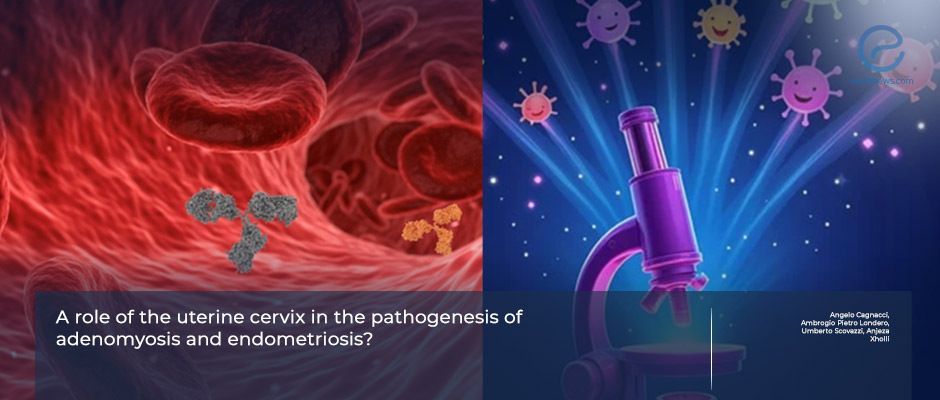



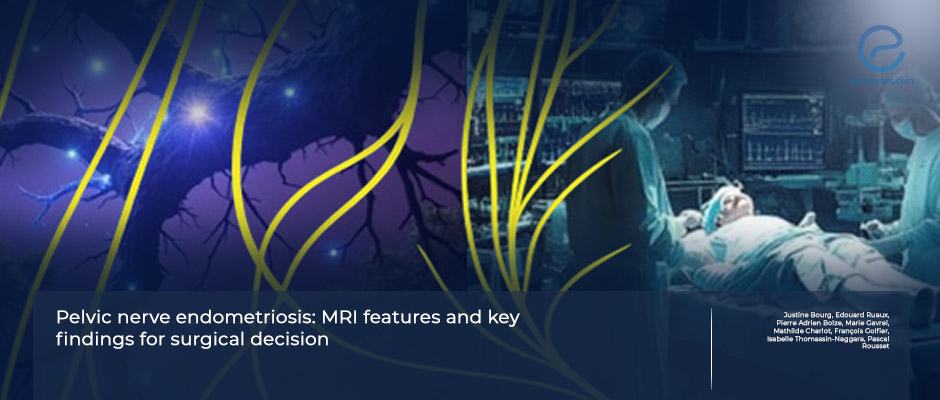



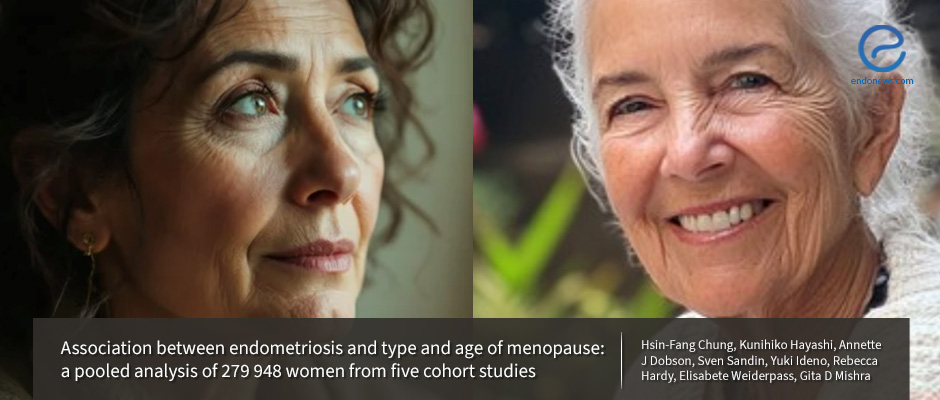
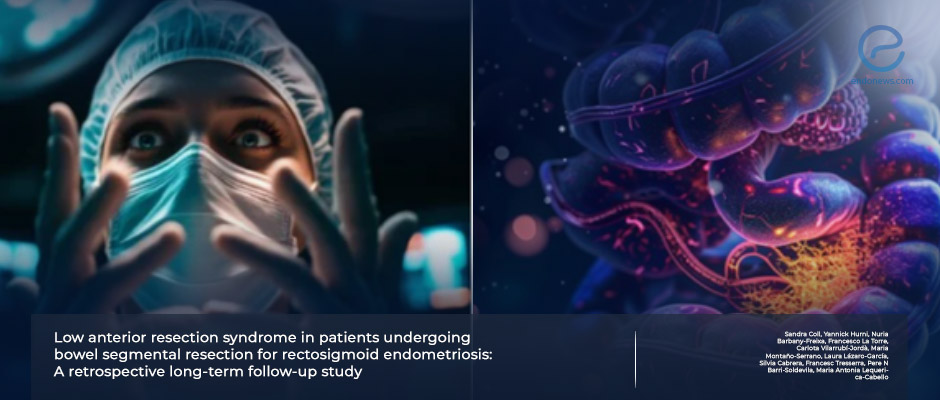
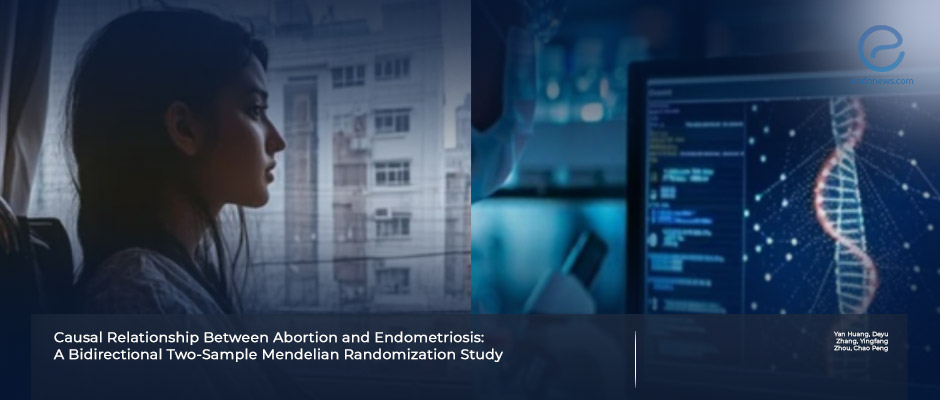

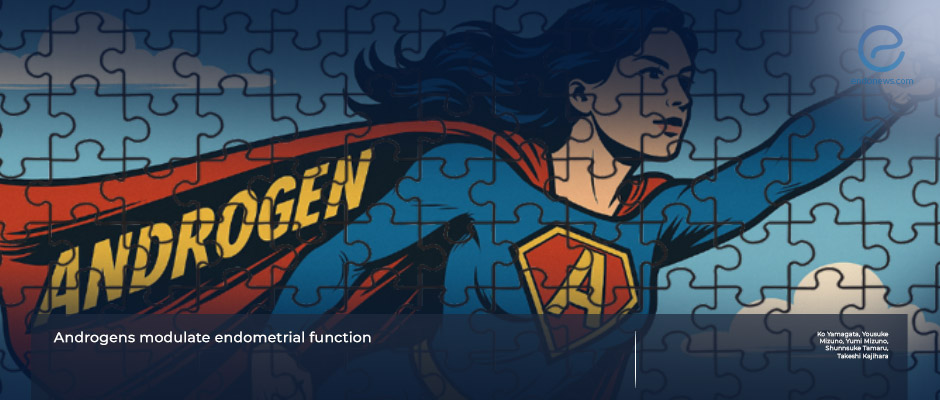

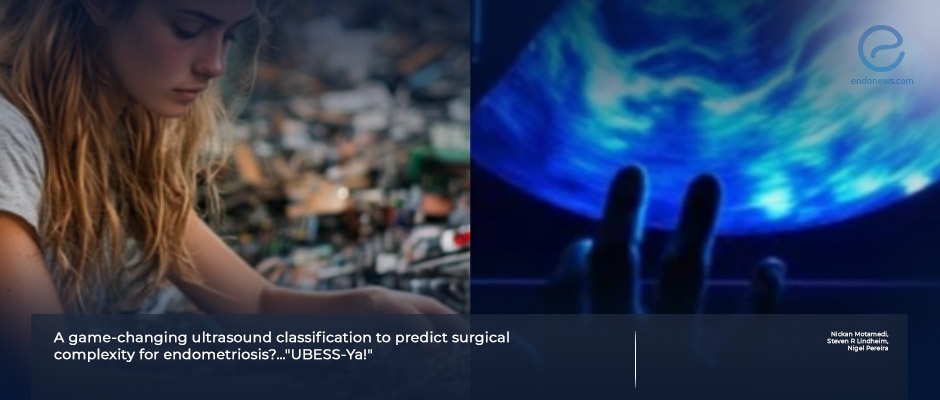
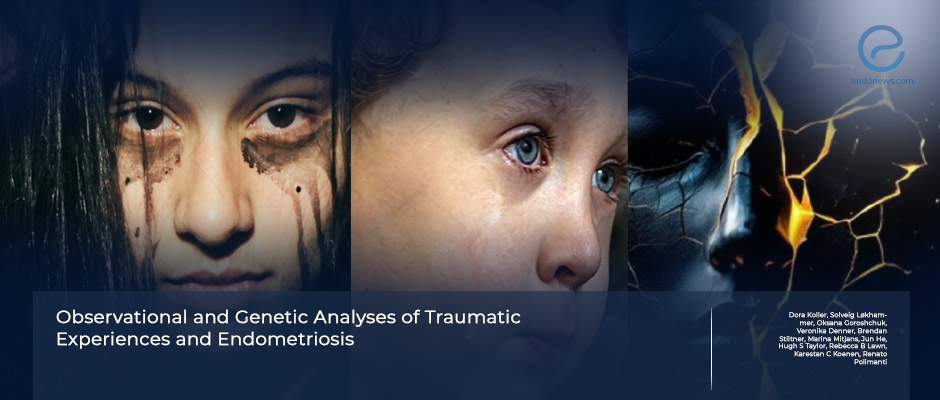

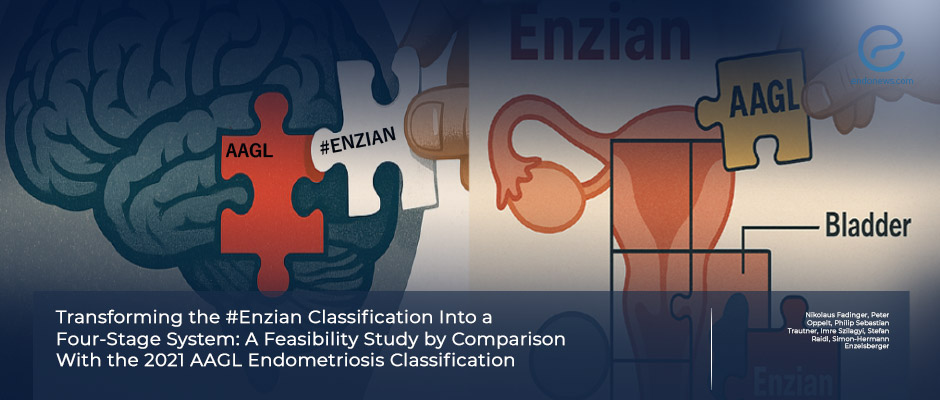

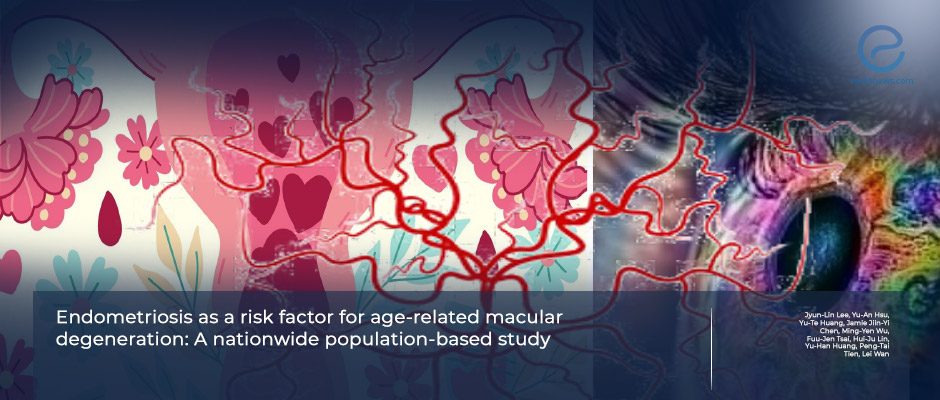
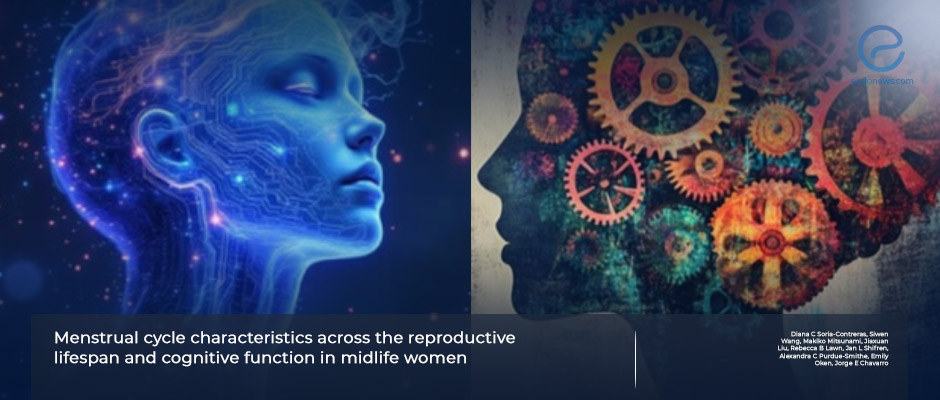
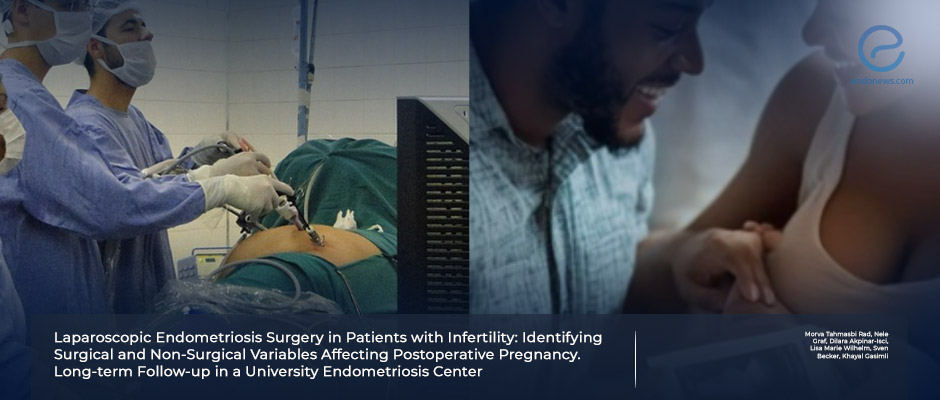
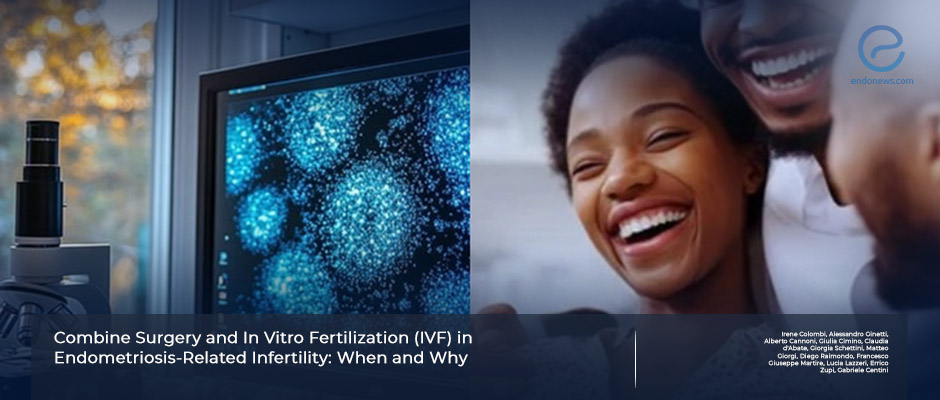
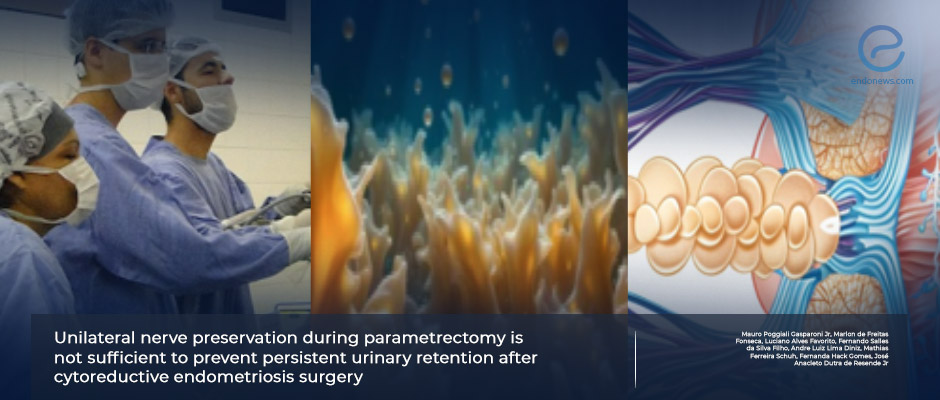
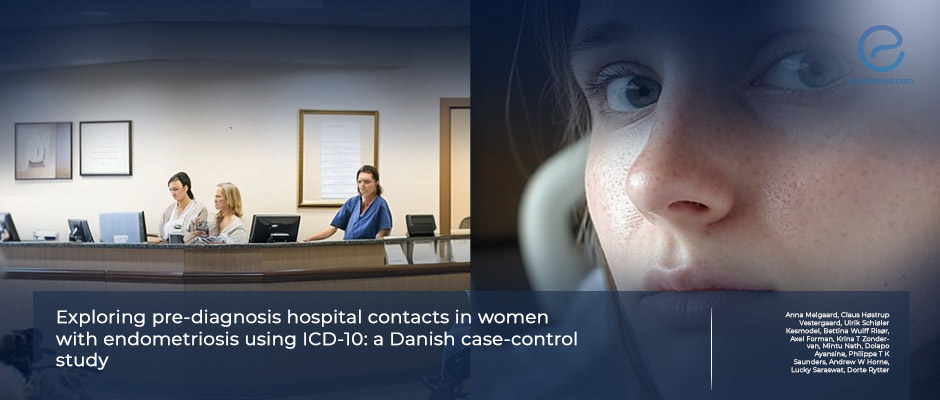
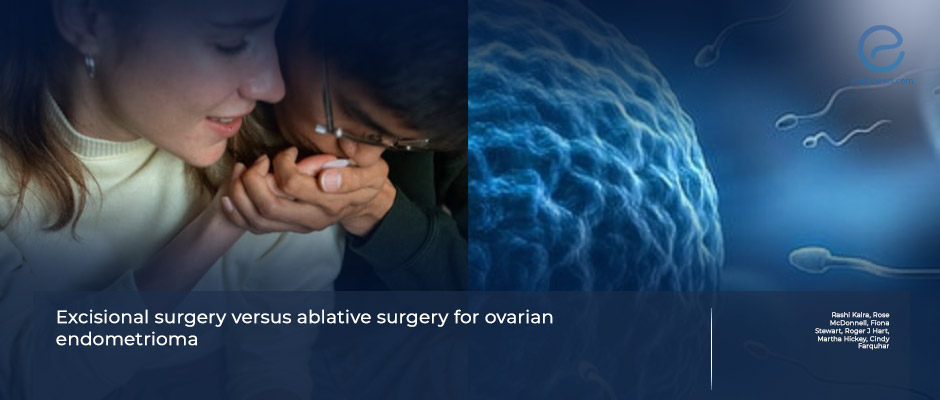
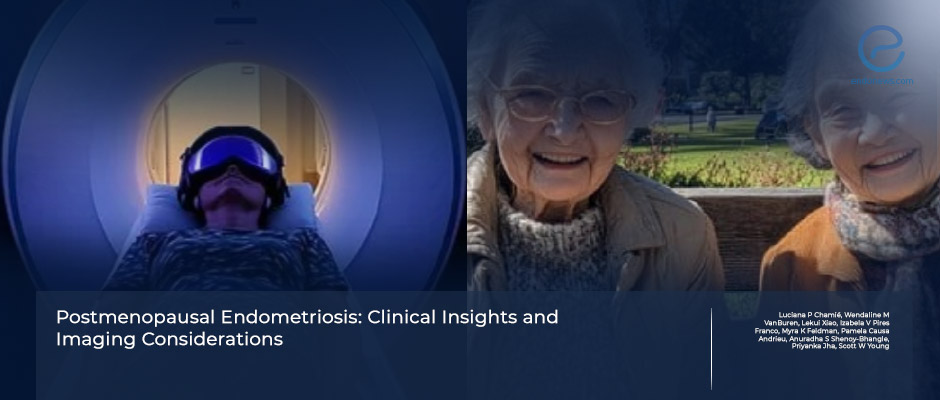
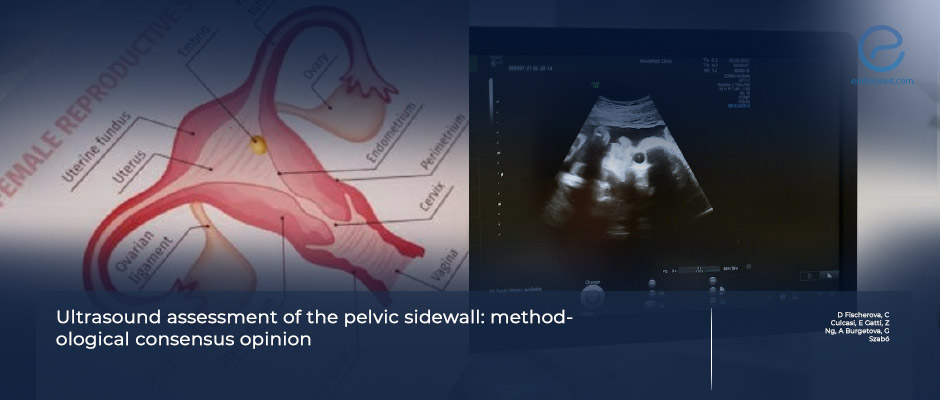
 By Özge Özkaya
By Özge Özkaya
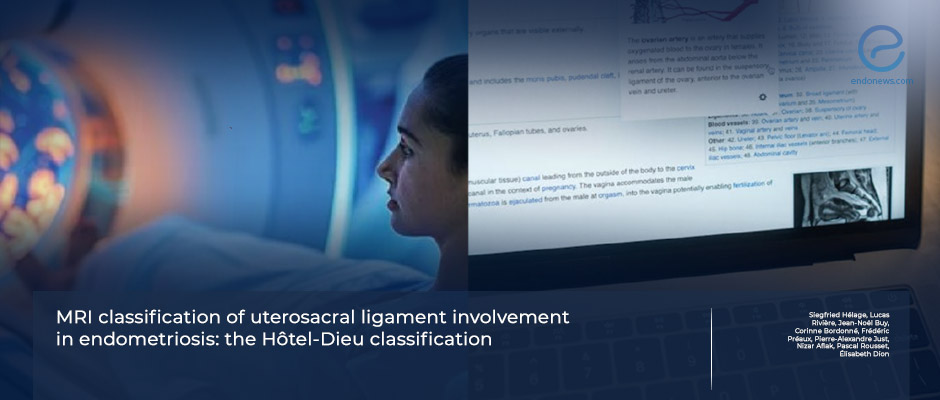

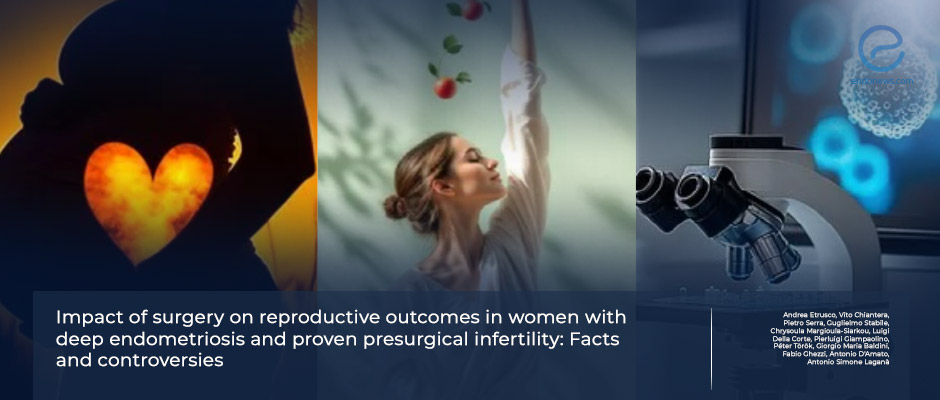
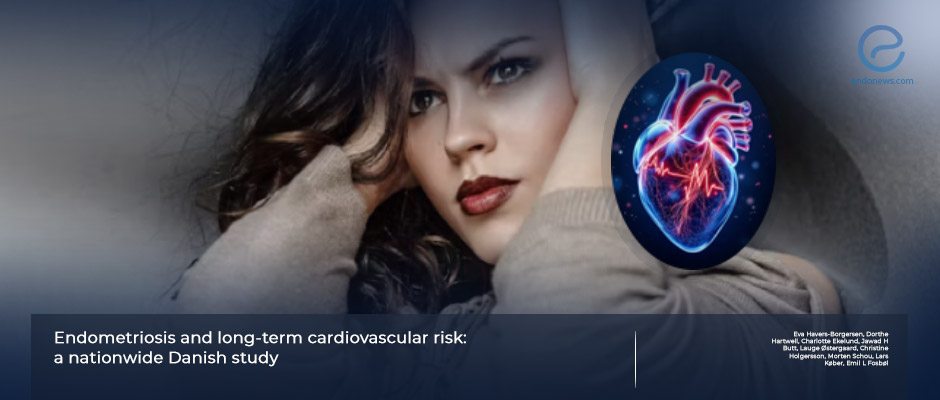


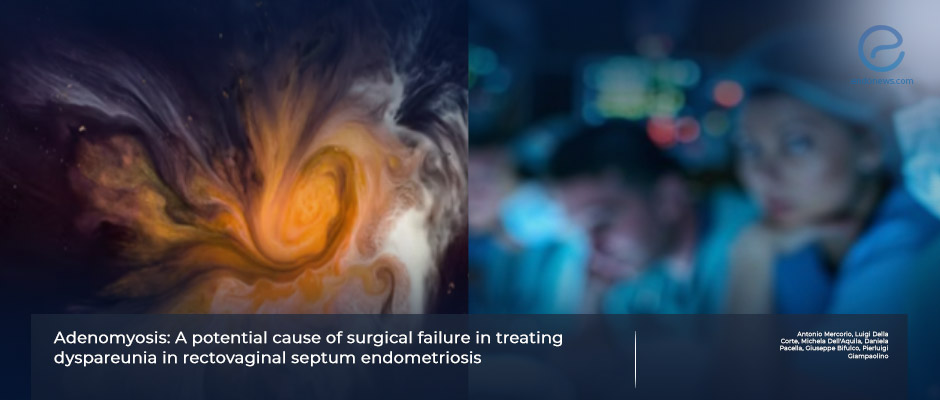
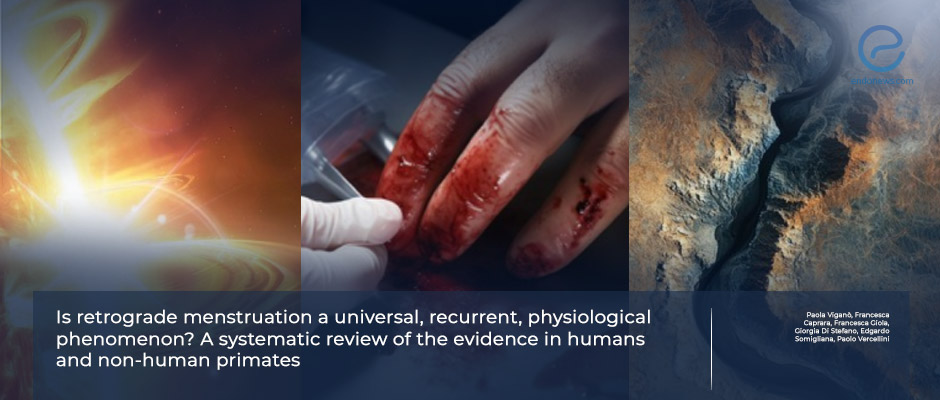
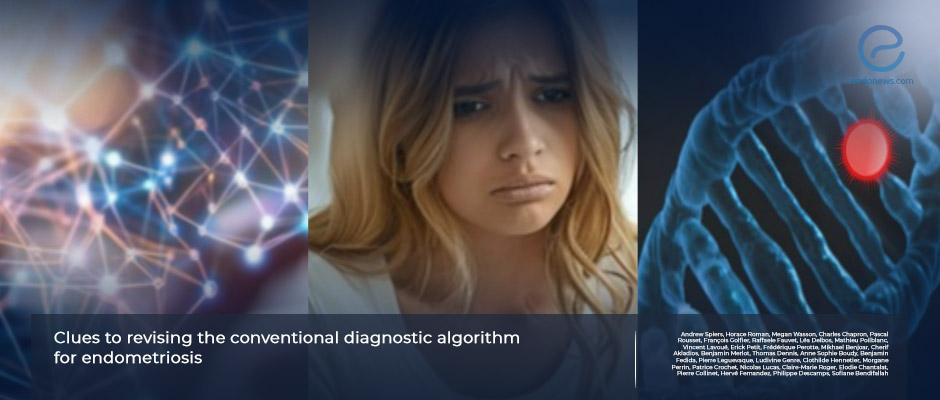

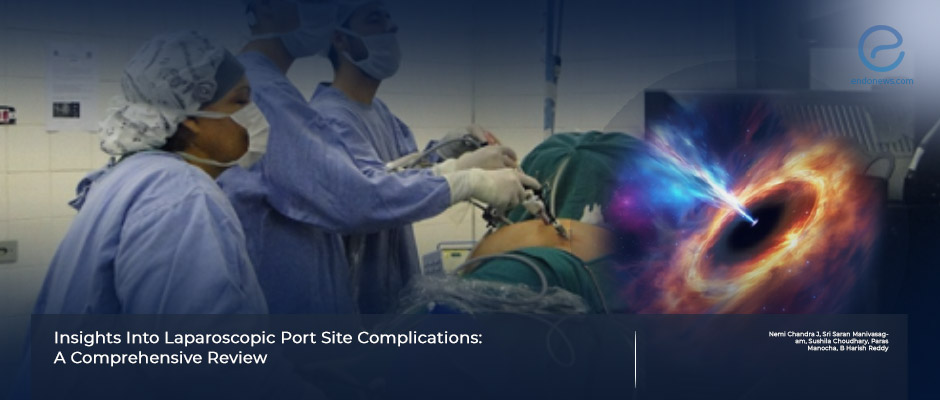

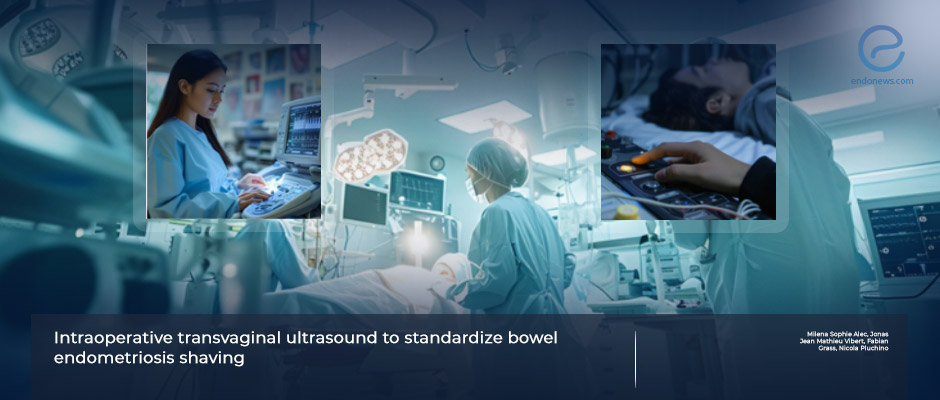
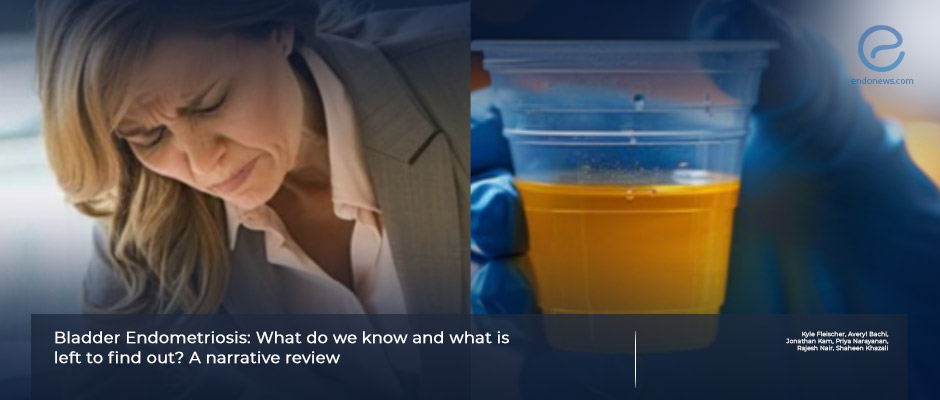
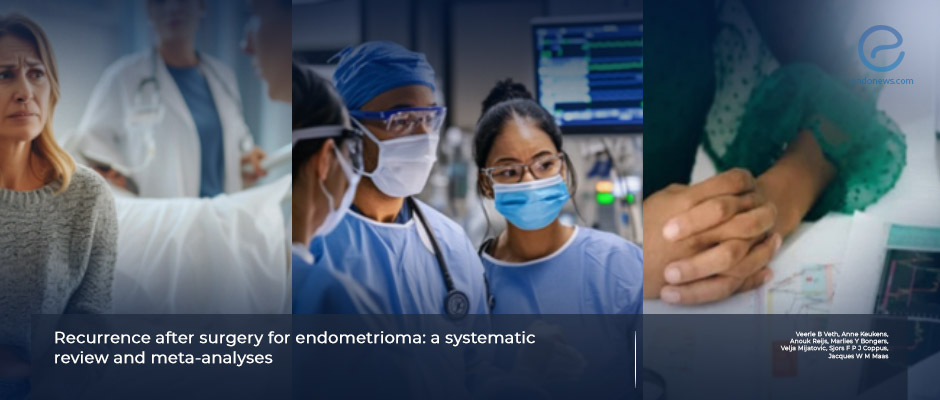
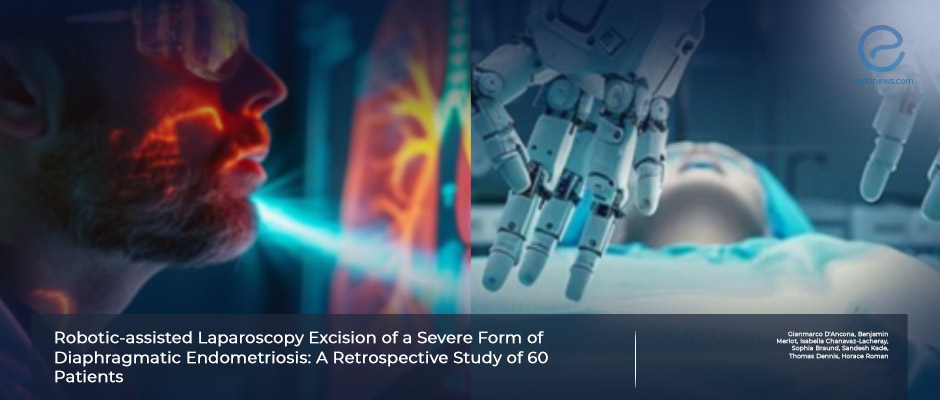
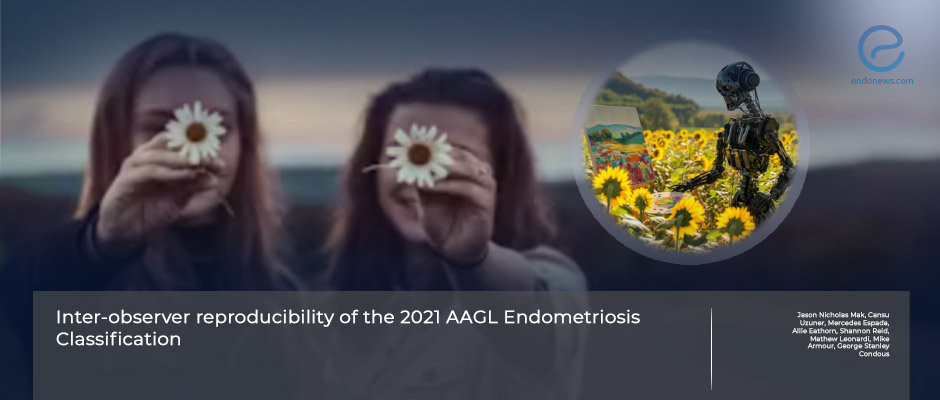
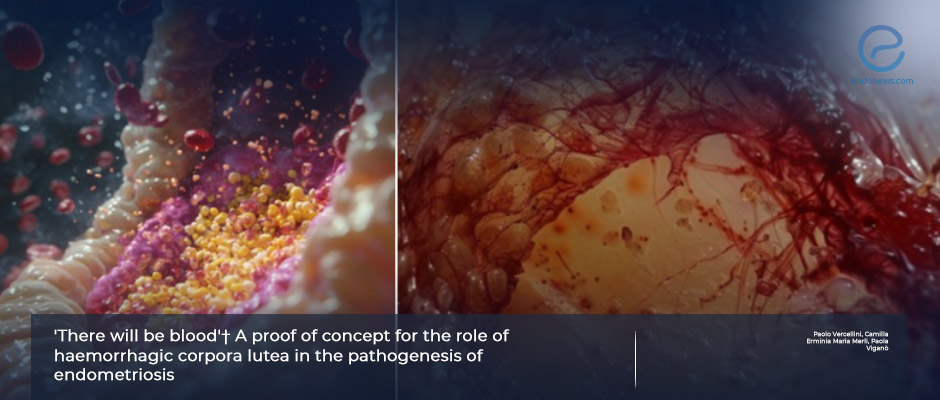
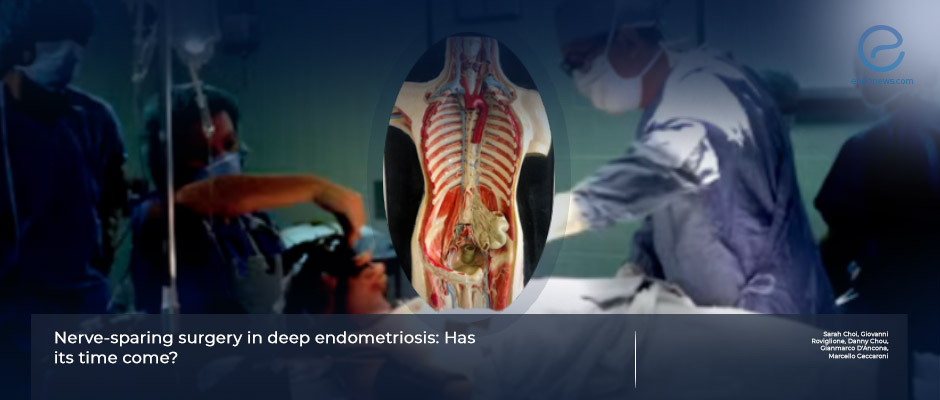

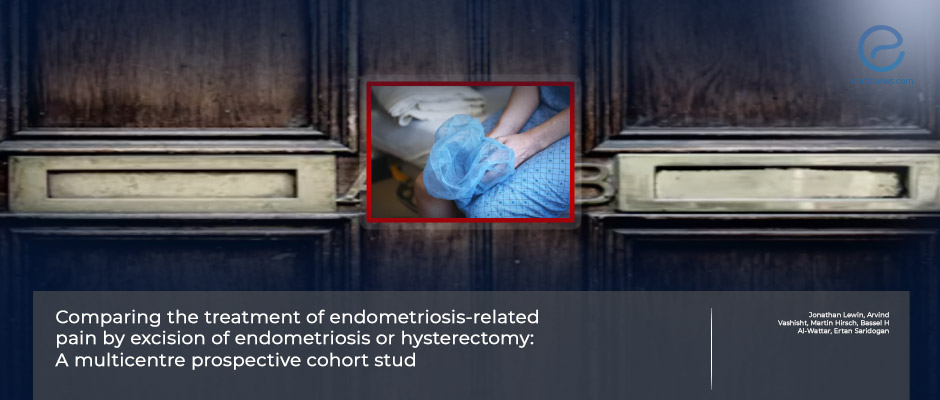
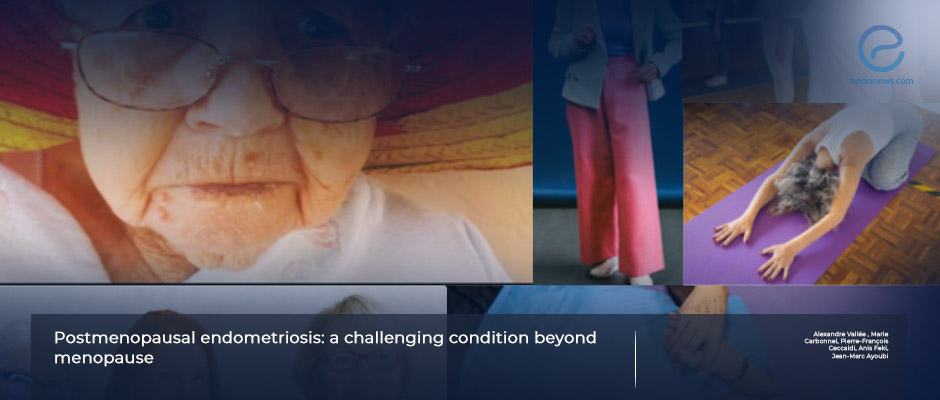

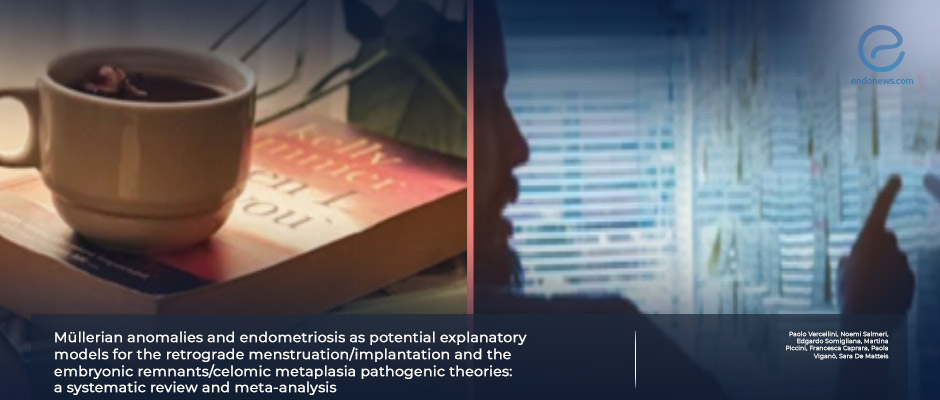
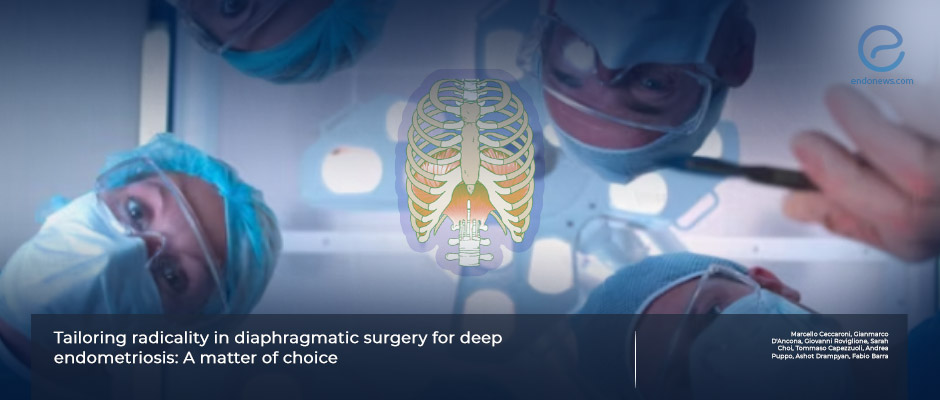

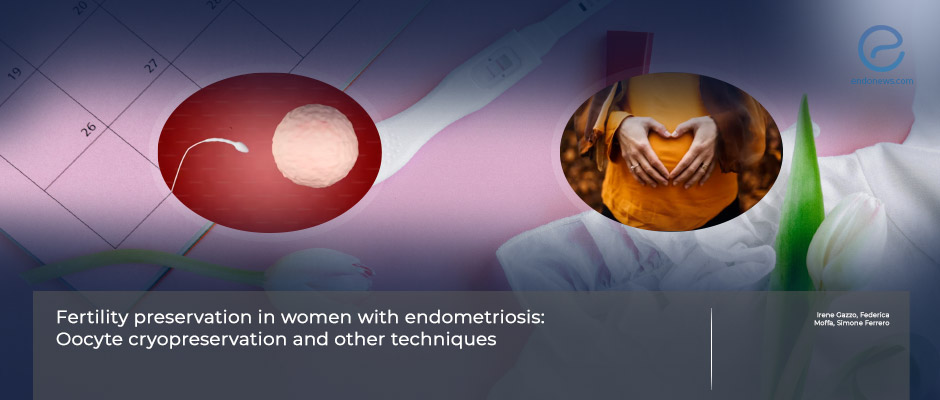
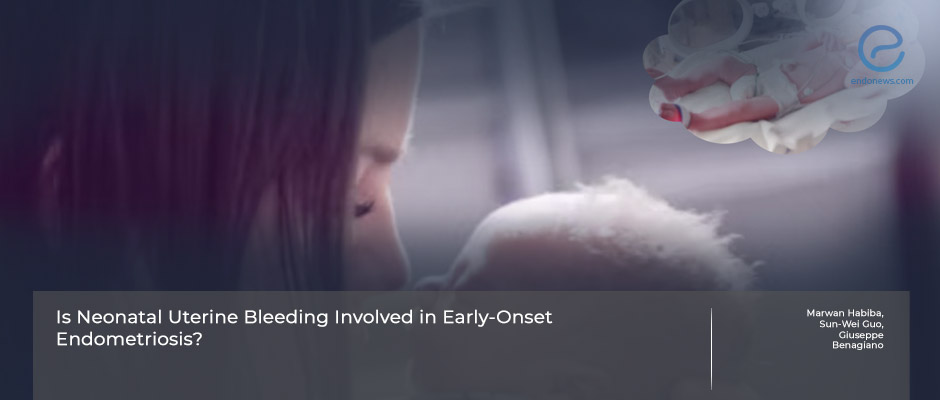

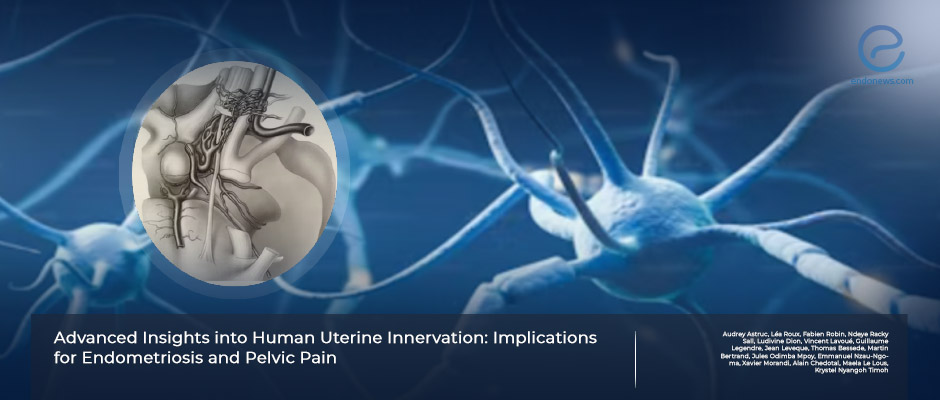
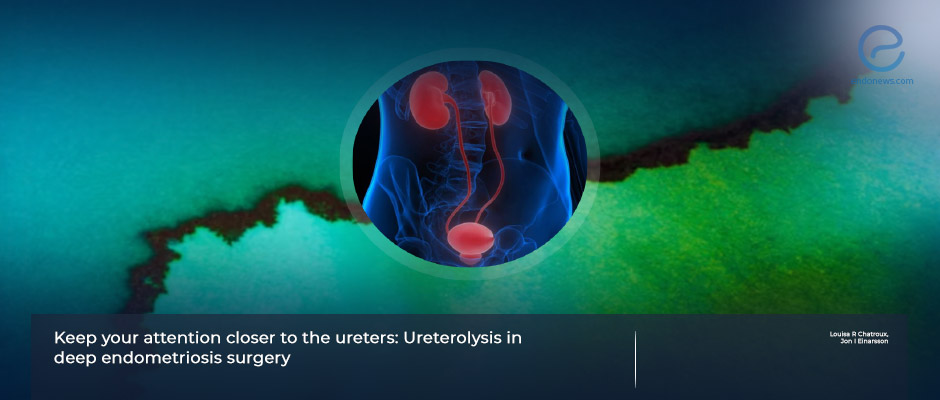
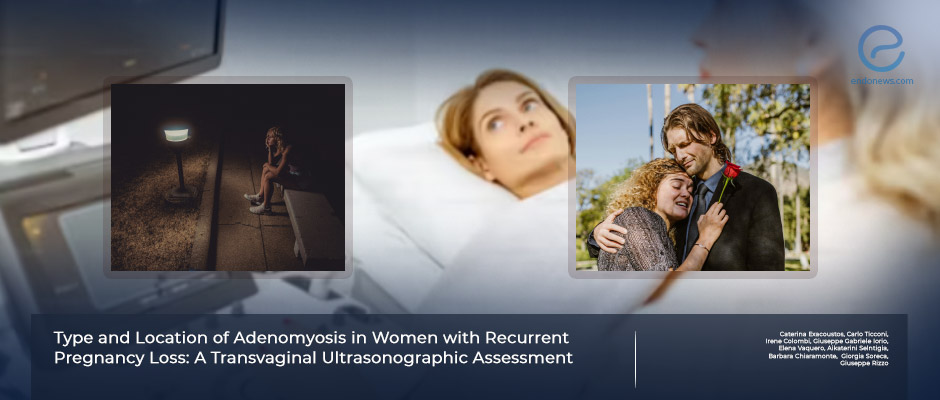
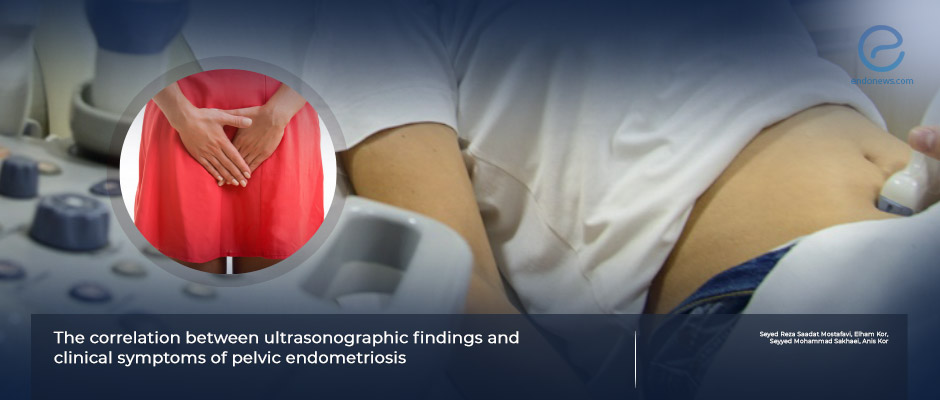


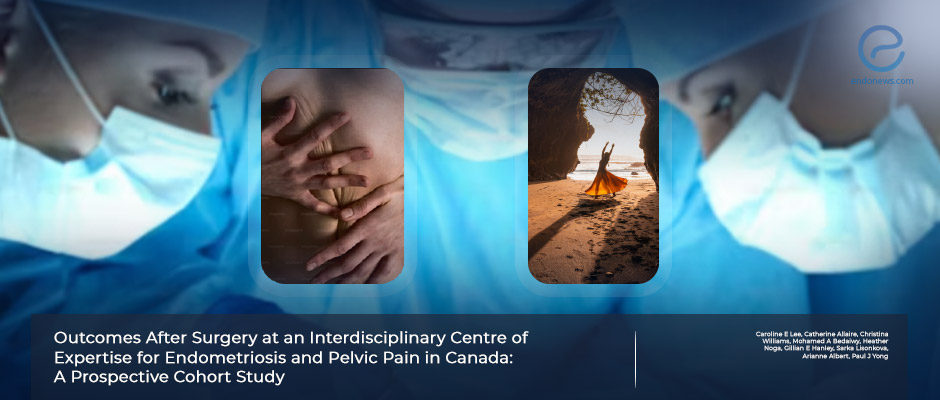






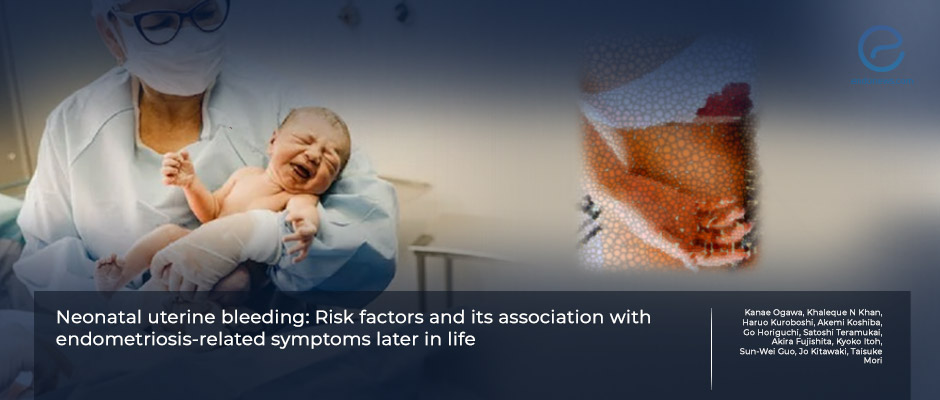





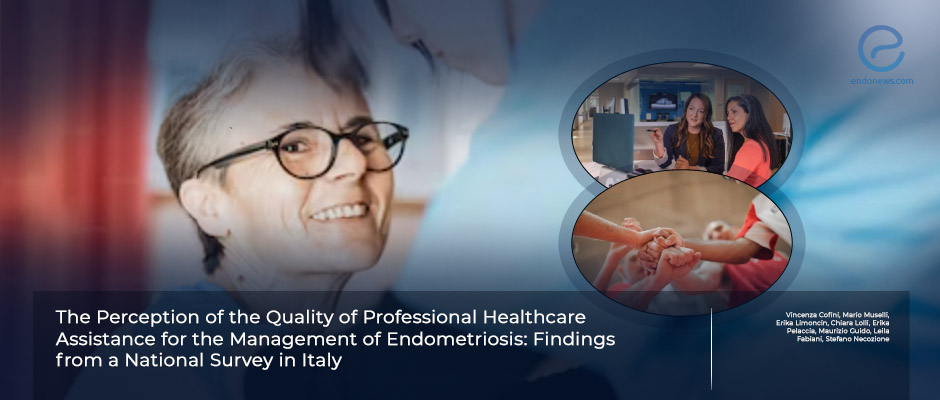
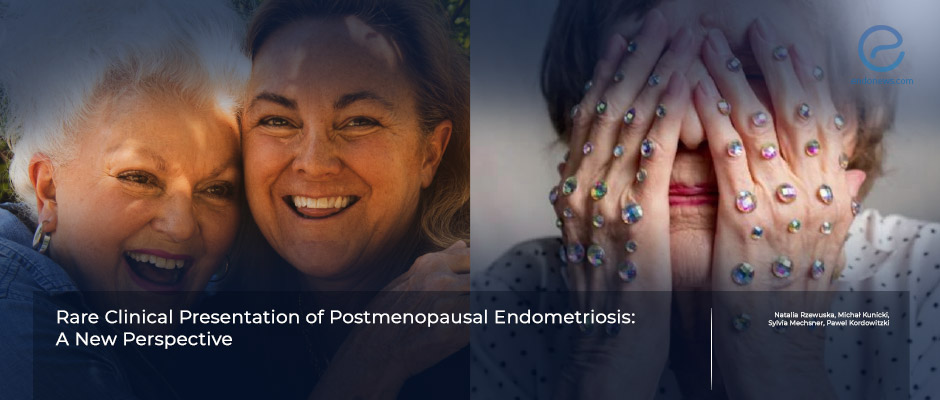







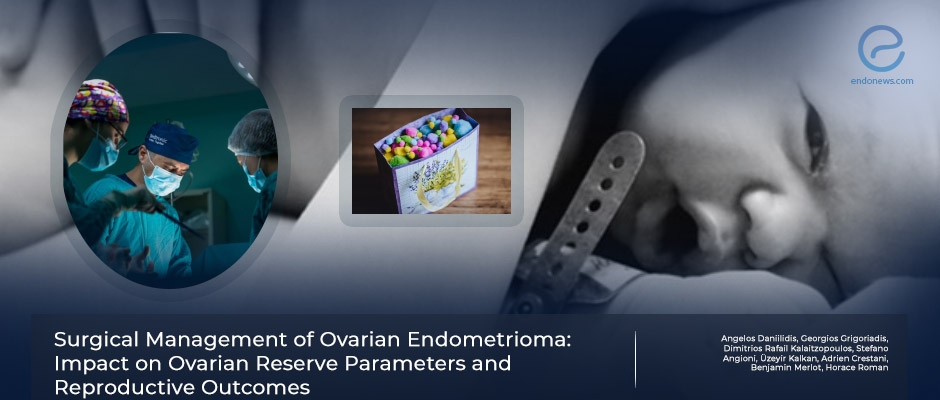

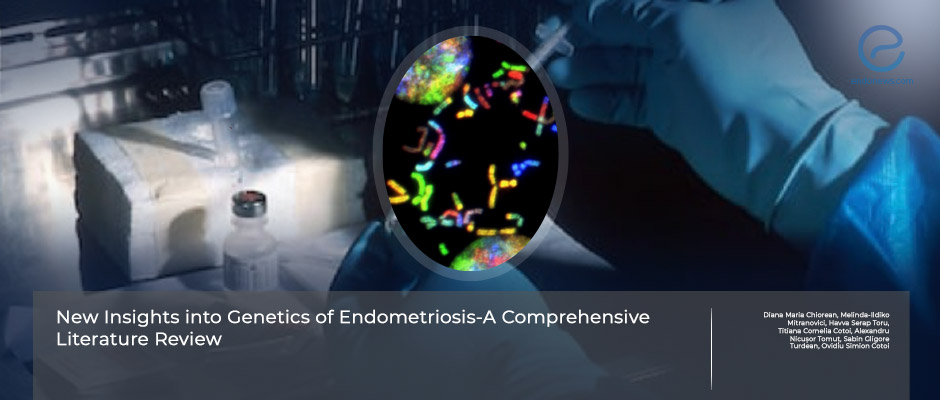











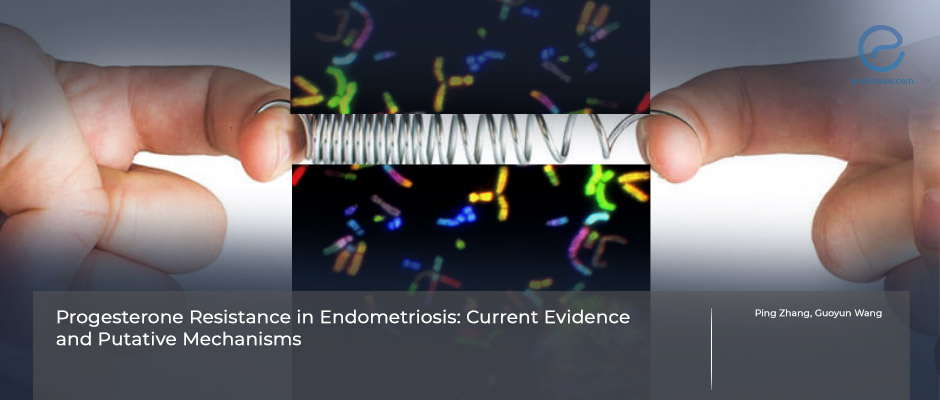




















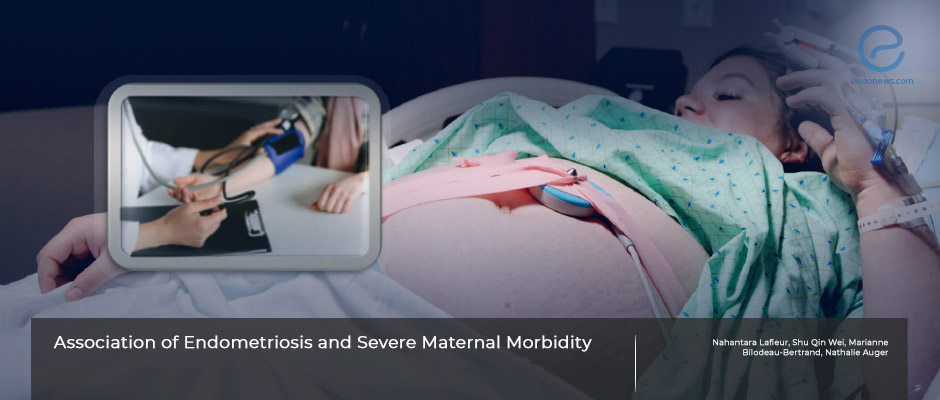
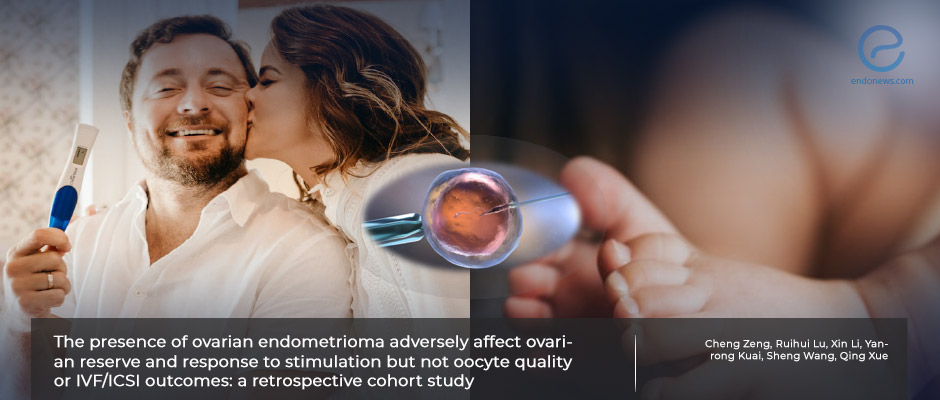










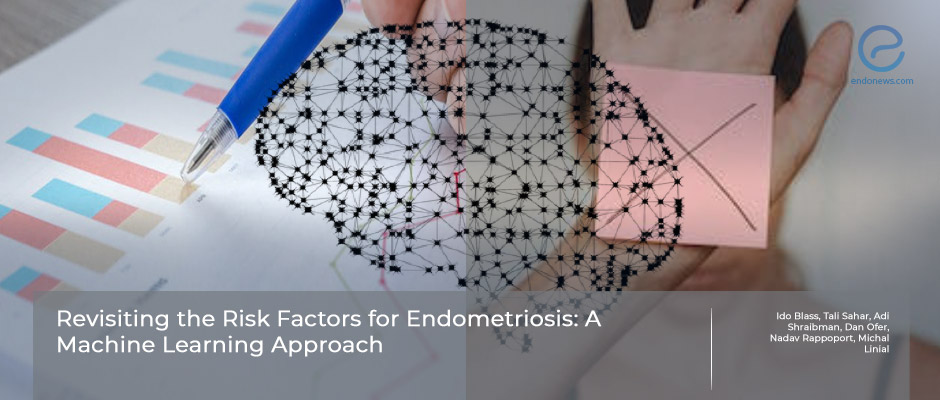









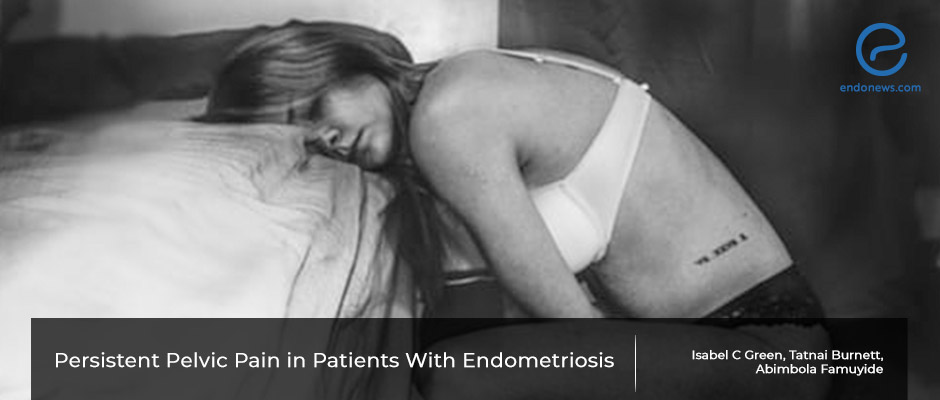

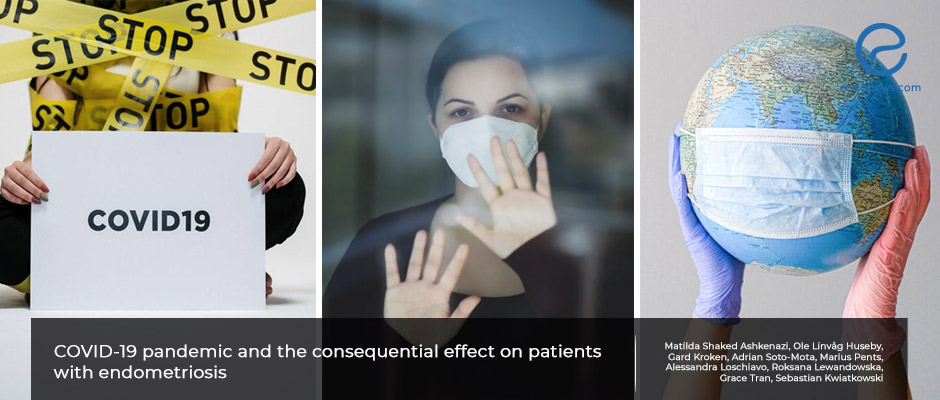













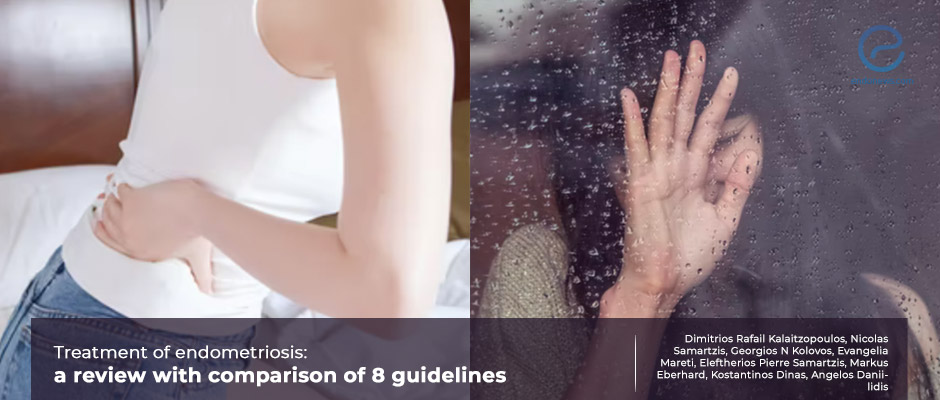








 By Nasuhi Engin Aydin
By Nasuhi Engin Aydin

















 By Yu Yu
By Yu Yu











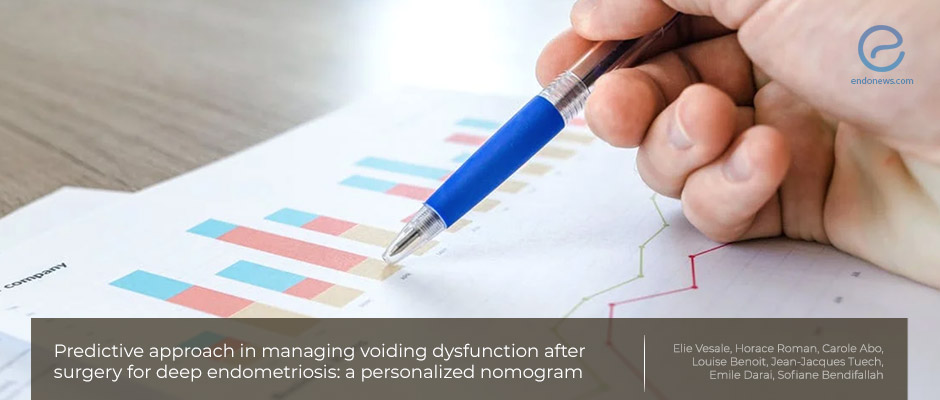



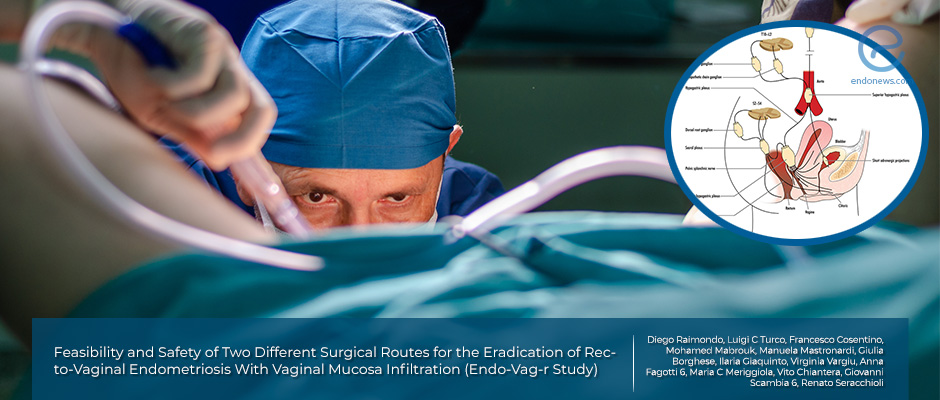




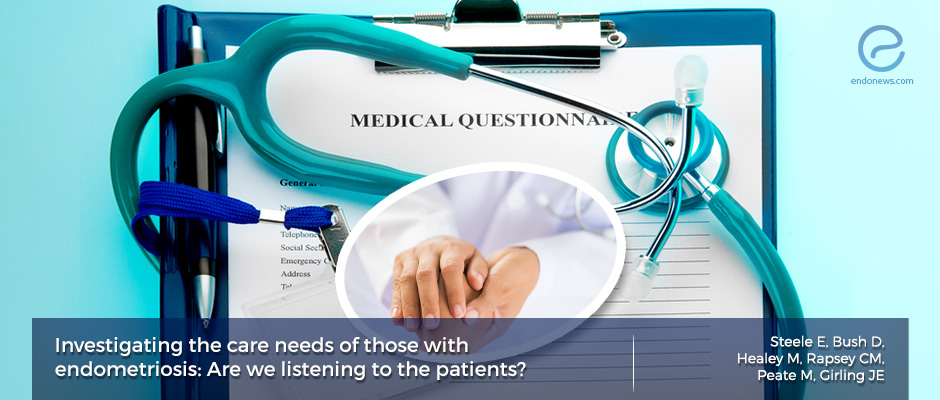



















 By Dr. Youngran Park
By Dr. Youngran Park

 By Murat Osman
By Murat Osman

